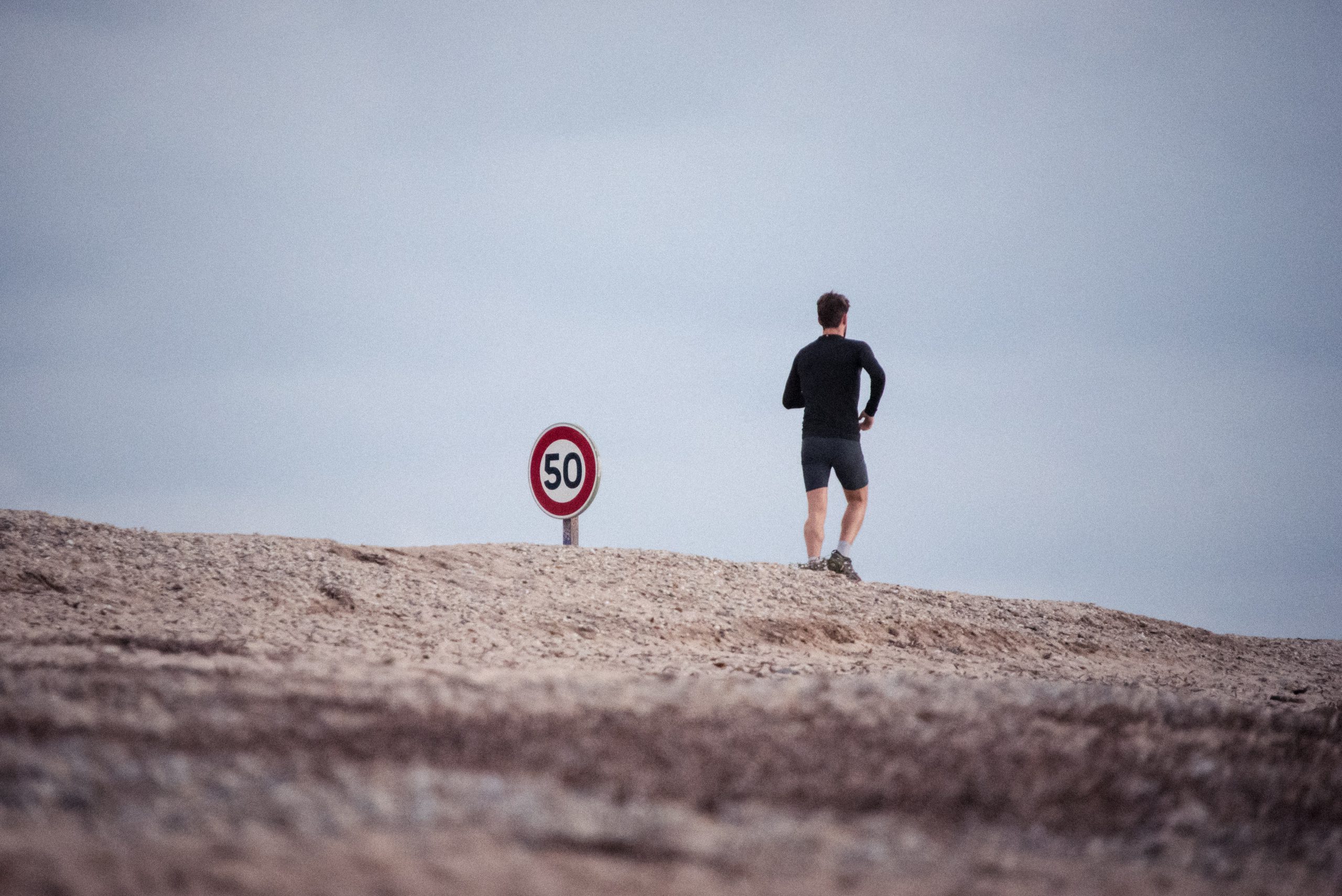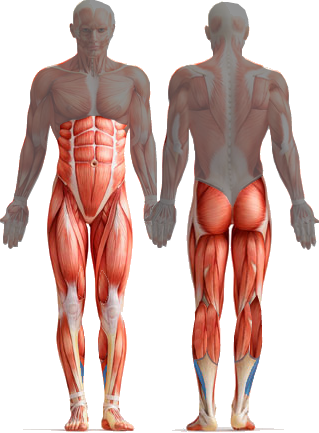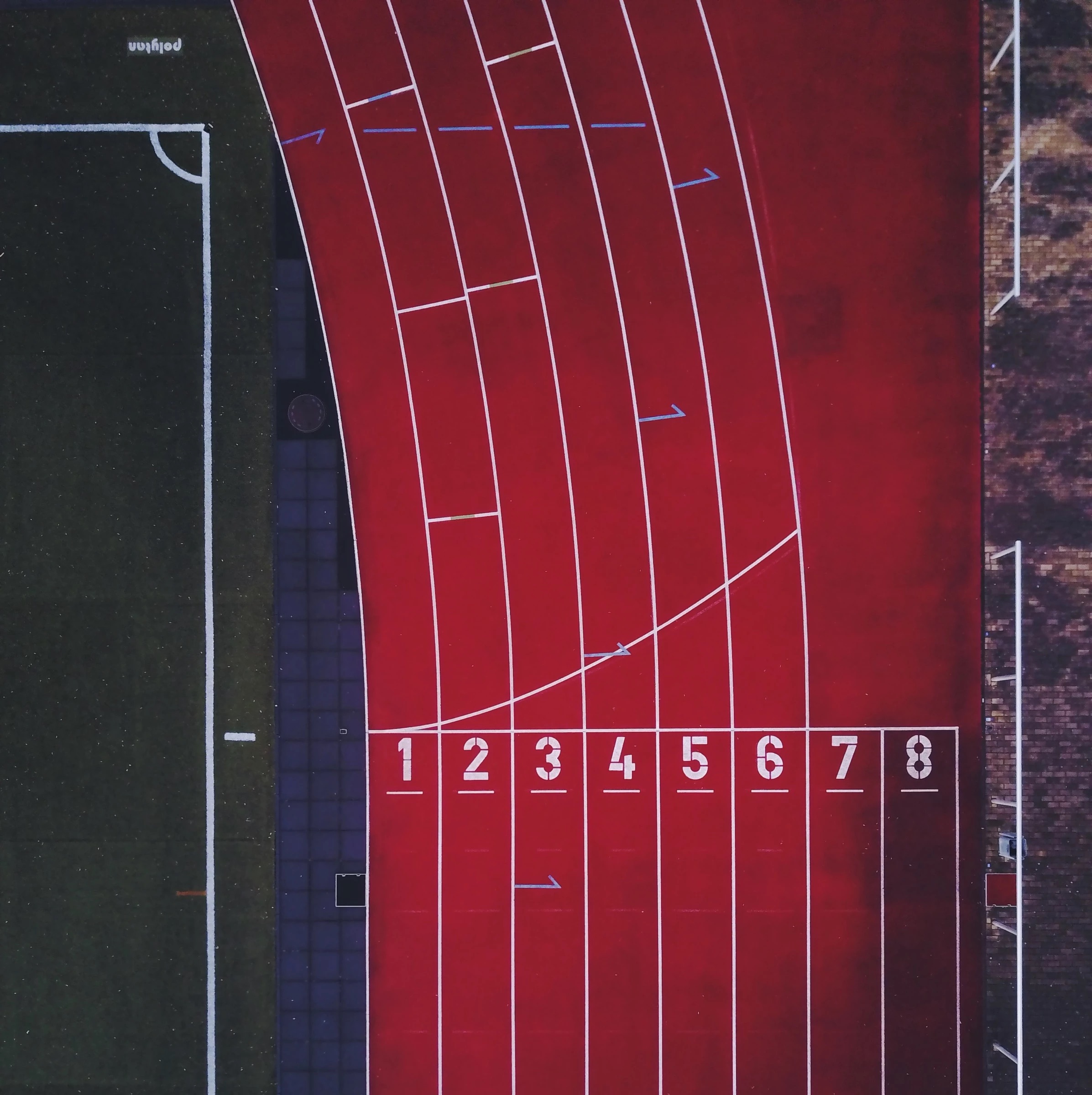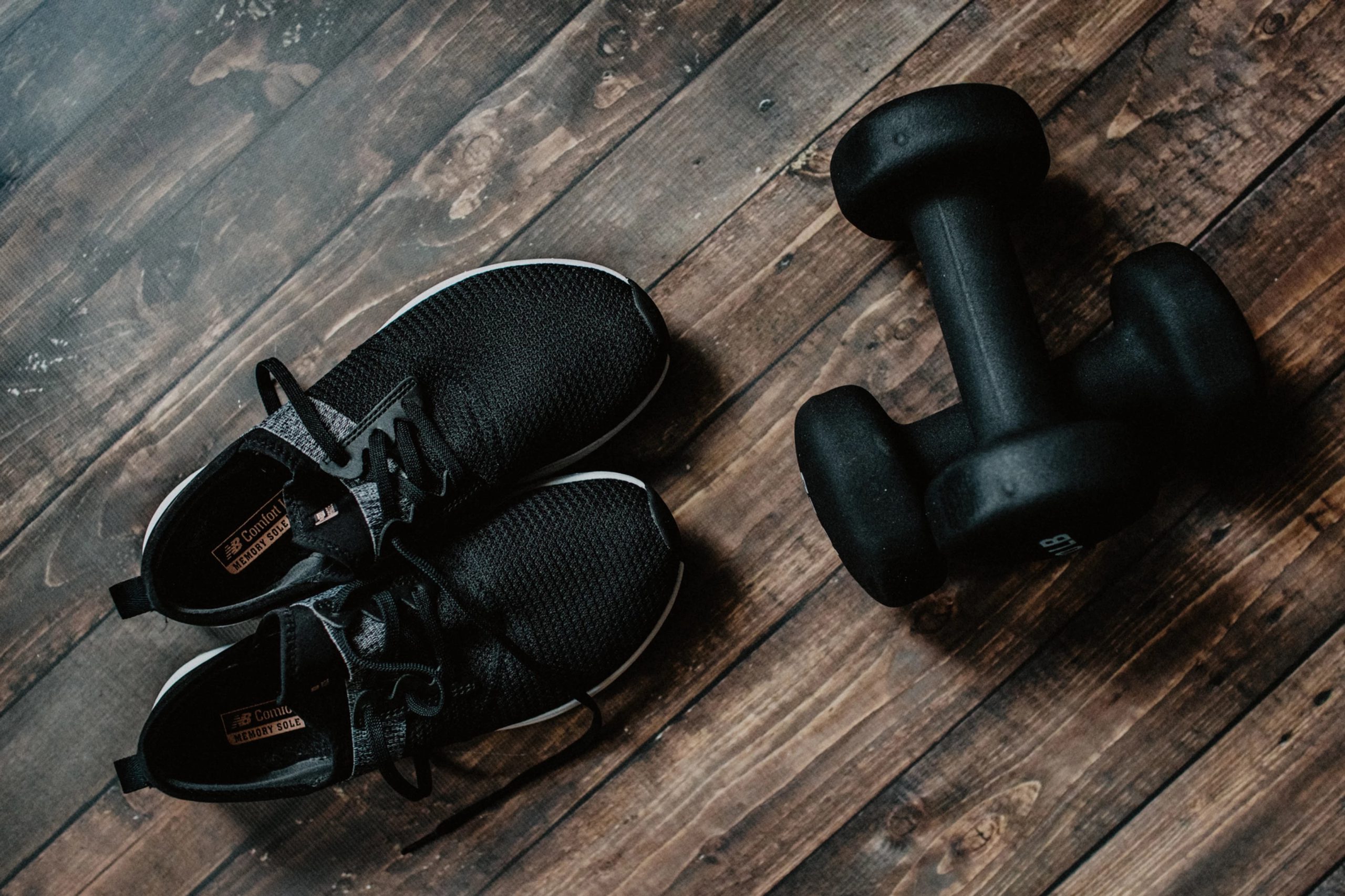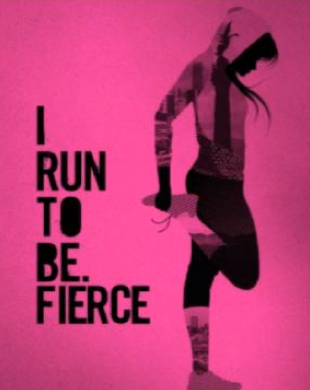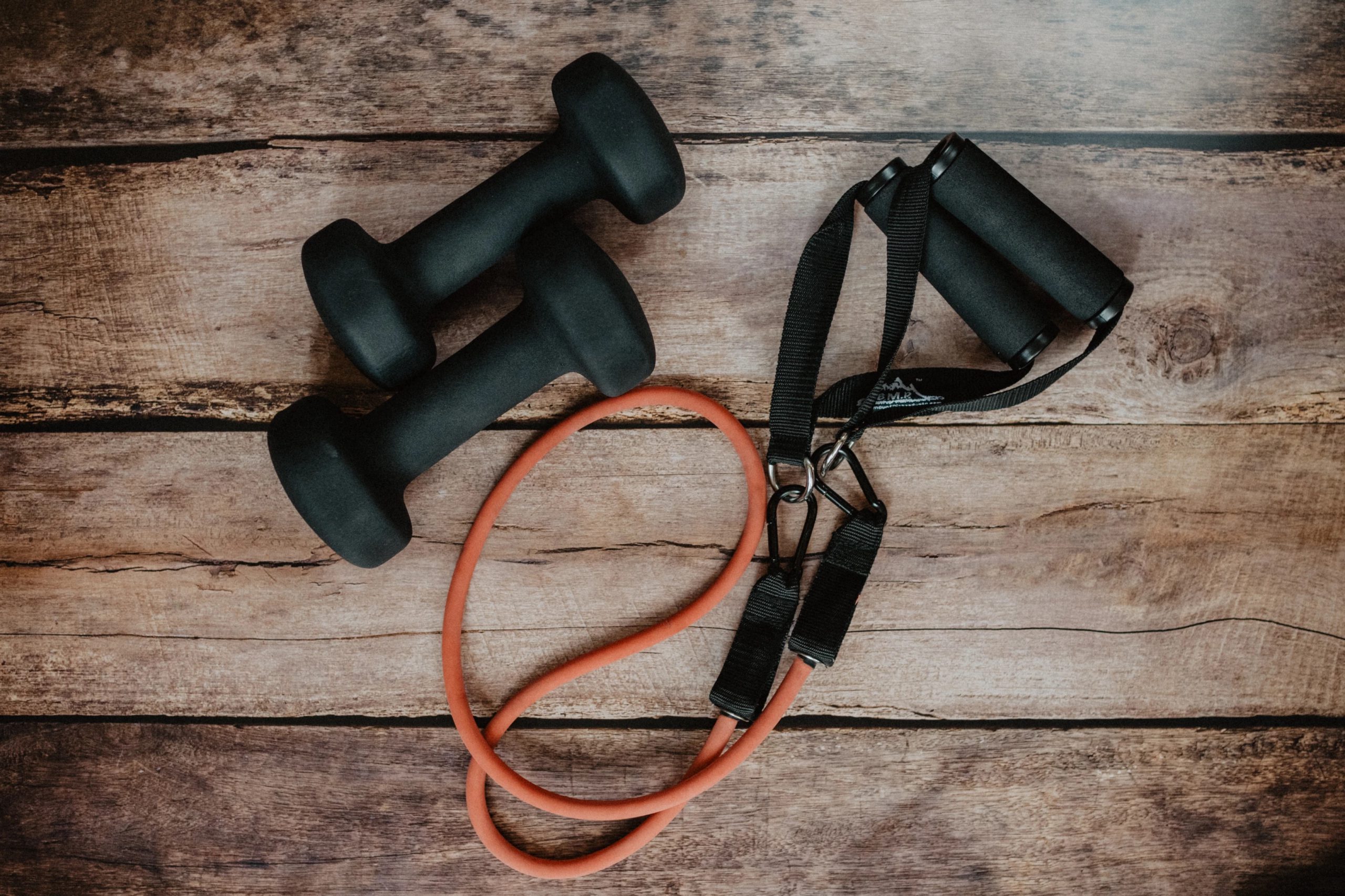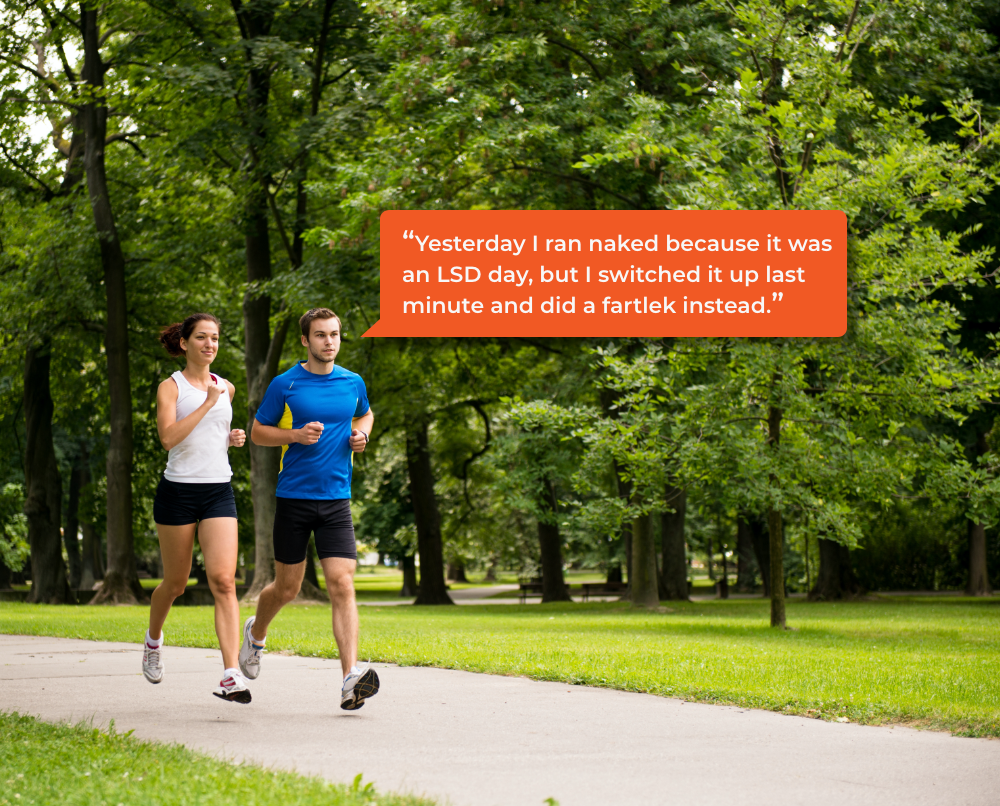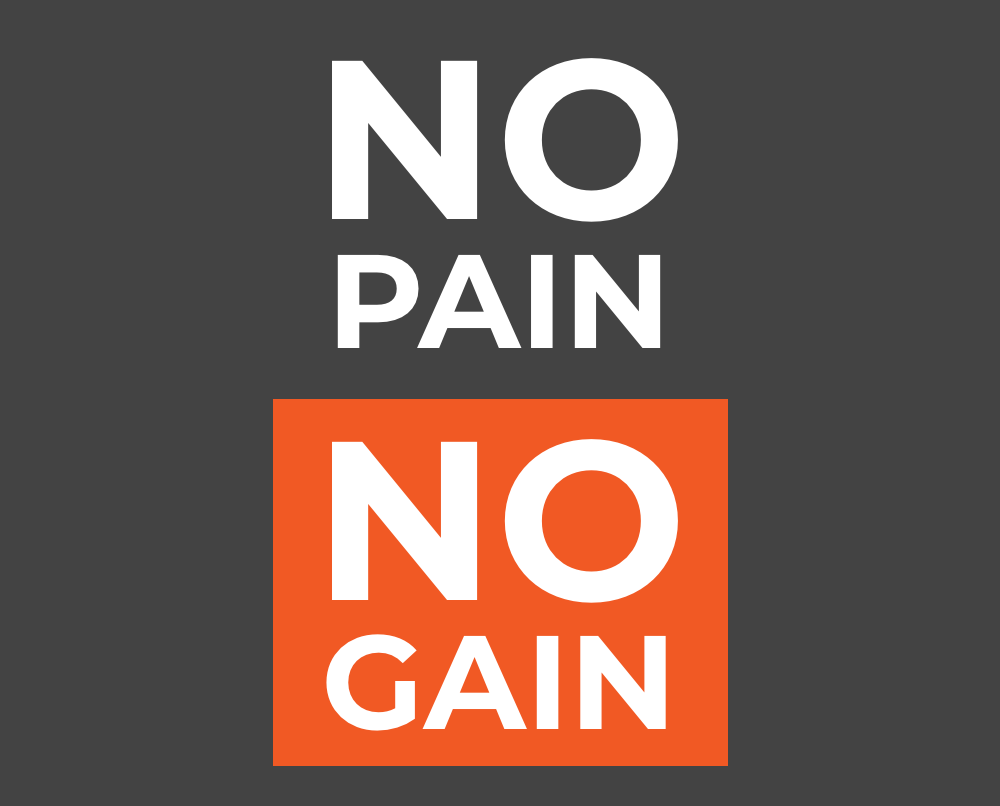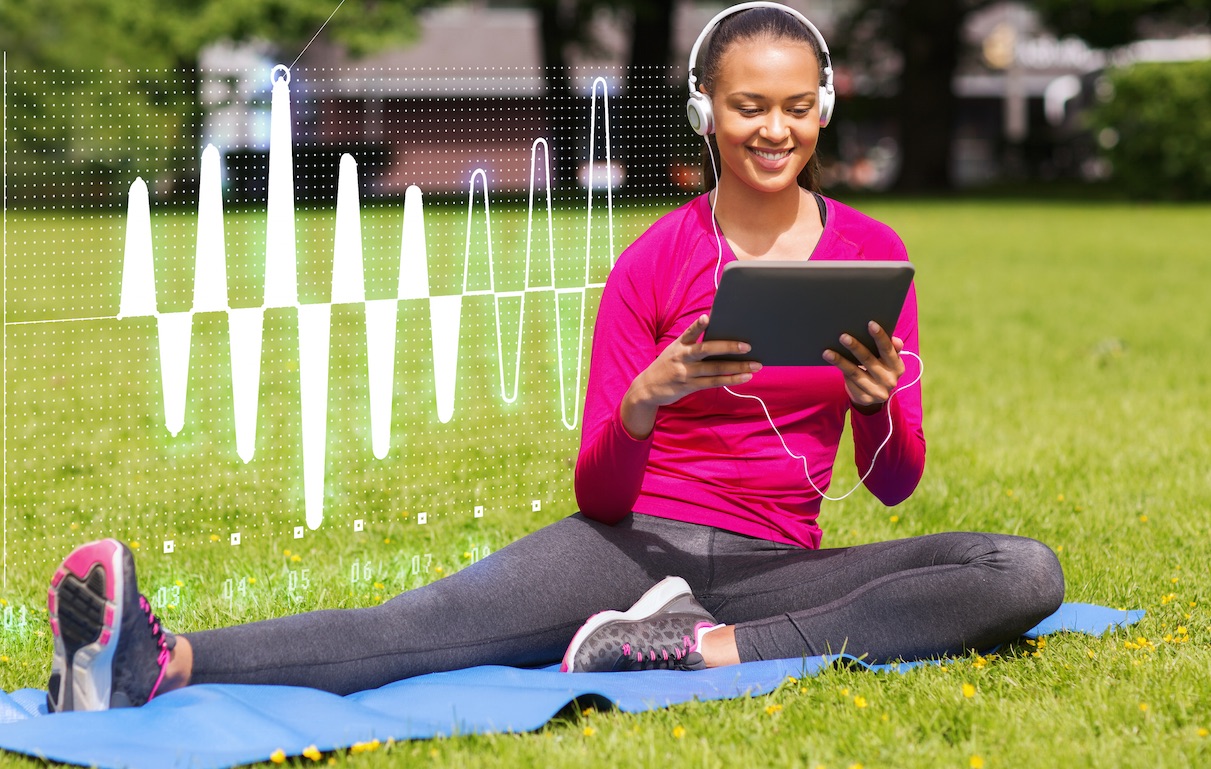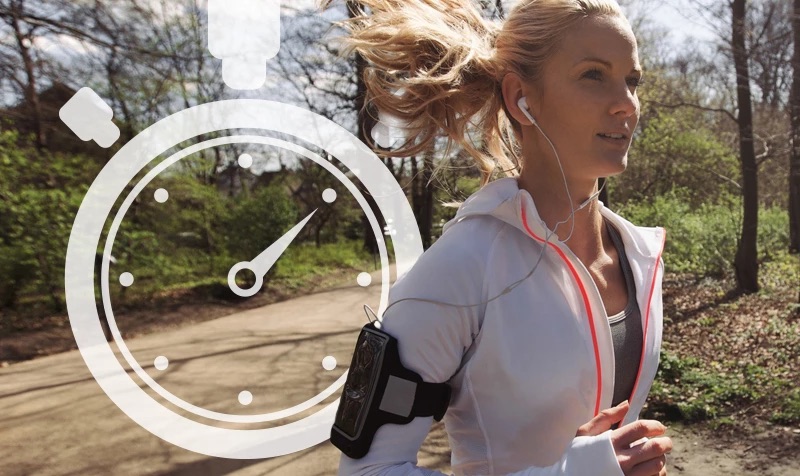· 3 min
How to Set SMART Fitness Goals
Wanting to take control of your health and fitness is a positive first step. If you really want to get healthy, exercise more, or make better food choices, the next step is to start setting goals that will push you forward. This is why the SMART strategy has become so popular. SMART Fitness goals are a method of goal setting that keeps you accountable and actually works. Here’s how to set your own SMART fitness goals this year and how to use tools like RockMyRun to make those goals a reality. What are SMART Fitness Goals? When we talk about the SMART strategy for fitness goals, SMART is an acronym for the five criteria of a great goal. Let’s break it down: Specific – Instead of making a vague goal like “Get healthier,” be more precise. You could say you want to lose weight, reduce BMI, or hit a certain running time, for example.Measurable – Set goals that make it easy to track your progress. Your goal might be, “Reach a goal weight of 150 pounds” or “Reduce my body fat to 15%.”Attainable – If you’re new to the world of fitness, matching Michael Phelps’ swimming speeds isn’t a realistic goal. Your fitness goals need to be challenging enough to push you but attainable enough that you don’t get frustrated and give up entirely.Relevant – If your goals are arbitrary, it’s easy to lose motivation because you don’t see the genuine benefit of continuing to work. Establish a “why” for yourself, like living a longer life for your family.Timely – Set a specific timeline for your goal. Instead of, “Lose 20 pounds,” your goal could be, “Lose 20 pounds in three months.” Otherwise, it’s easy to keep saying, “I’ll start tomorrow.” SMART goals give you a sense of purpose and direction so you can stay organized and on target. Tips for Your SMART Fitness Goals As you set your fitness goals, you’re bound to face some obstacles. These tips can help you stay on track to crush your SMART Fitness Goals. Make Fitness Fun Part of making your goals attainable is making sure the work is enjoyable enough for you to keep coming back to it. Try tools and tricks to make fitness fun, like RockMyRun – a music app that optimizes your favorite music to work with your exercise routine by adapting to your body in real time to keep you motivated. Know Your Priorities Fitness takes time and energy. Be honest with yourself about how much of those resources you’re able to dedicate to your health goals. For instance, if your time priorities are your family’s needs and a demanding job, set a slower timetable for your fitness goals so it’s realistic. Allow for Trial and Error Different workout strategies work for different people. You may also need to change your plan part of the way through your fitness journey if you hit a plateau, your schedule changes, or if you need to change your pace or distance. Whatever the case may be, set a plan but be flexible enough to adjust it when necessary. Keep Yourself Accountable We all have bad memories, and we have conveniently bad memories when it comes to doing something that may be challenging. Keep yourself accountable by writing down your SMART Goals and hanging them up in a place you can see every day. This should motivate you as well as holding yourself accountable! Get excited about the process and achieving your goals. You should look at your goals and think “Wow, I can’t wait to be at that level!” and then get there one day at a time. We also love accountability buddies, set SMART goals with your partner, colleagues, or group of friends, and check in often to see how everyone is doing. You can even make it a competition! Start Now Once you set SMART goals, start working on them right away. Avoid losing momentum so you can keep making gains. Setting SMART Goals and Making Them Happen Improving your health is hard, but it all starts with the right goals. Learning the tricks of SMART fitness goals and trying tools like RockMyRun will help you truly make the most of the year ahead. Take RockMyRun for a test drive and give your workout a fun boost!
· 2 min
Why Run/Walk Intervals are Better (and More Effective) than Running
When you’re feeling motivated to run, all you can think about is charging forward as fast as you can. You know the faster you run, the sooner you’ll get the blood flowing, cover more distance and start torching those calories. However, if all you’re doing is charging ahead without run/walk intervals, you could be missing out on some serious benefits. What are Run/Walk Intervals? Run/walk is a type of interval training where you break up your run with periods of walking. For example, you might run for 1-2 minutes, then walk for that same amount of time before running again. Breaking it up with run/walk intervals have some attractive benefits. Benefits of including short walk breaks in your run: 1. Run/Walk Intervals Protect Your Joints Do you want: More speed? Faster recovery? Less chance of injury? If so, it’s all possible with run/walk interval training. If you’re running and start to experience pain, you’re more likely to push through it. This is bad news for your body, though, as it may increase the risk of injury. Adding a short walk in between sprints gives your body extra recovery time and puts less wear and tear on your joints, helping ensure you’ll be in better condition to continue working out uninterrupted. 2. Interval Training is Actually More Challenging If you’re one of those people who have to keep running or else you might give up as soon as you stop (don’t worry, we totally get it), you can already guess why run/walk intervals are more challenging than running alone. It takes motivation, willpower, and stamina to continue switching back and forth. It also challenges your body in different ways. In addition, many who utilize run/walk intervals admit it requires more focus, which further adds to the complexity. 3. It Reduces Fatigue to Help You Push Harder If you’re new to run/walk intervals, don’t be surprised if you notice you have the energy to exercise longer. You’re no longer running toward pure exhaustion, but rather taking short breaks throughout so that you never feel exhausted in the first place. Less fatigue helps you keep going longer and stronger! Get Started With Run/Walk Intervals Now that you understand the benefits of run/walk intervals, it’s time to apply these to your own training. We recommend starting with the 1:1 ratio. Walk for one minute to warm up, then alternate between running and walking for one minute each and see how many intervals you can do! If you’re already using RockMyRun, it’s especially incredible for Walk/Run Interval training because the beat of the music adapts to your pace and heartbeat, so it’ll slow down when you’re walking and speed up when you’re running. If you’re not using RockMyRun yet, this is a great time to start! Enjoy a playlist optimized for your workout style and designed to help you hear the difference in your pace. Check it out for yourself: Start your two week free trial today.
· 4 min
Ease Into the New Year: Meeting your Fitness Goals while Putting Your Mental Health First
2020 was a challenging year to say the least. Some used the isolation as an opportunity to focus on their fitness, but many of us (let’s be honest: most of us) ended up putting on the “Covid 19 (pounds).” It’s easy to get discouraged when something like that happens. You’ve been taken out of your routine, your mental health is strained, and fitness can slip. We’re a fitness company, but we want to tell you that if this is you: It’s okay. Slipping is easy, getting back into it is hard. That’s why for this New Year’s Resolution season, we want to promote healthy fitness. It can be frustrating to compare your current fitness levels to where you were pre-COVID, which is why it is important to focus on incremental steps to get you back to where you were instead of trying to do everything at once. Here are some tips we had to working fitness back into your daily routine while putting your mental health first: 1. Bring the joy back into fitness! Exercise should be a form of self-love, not punishment. Whether you’re shredding half marathons every other week or struggling to get off the couch, working out should be enjoyable! Make sure you’re exercising because you love your body, not because you hate it. Reframe how you see exercise. Tell yourself, over and over, like a mantra “This is me time. I’m doing this for me because I love myself.” Your body is powerful and complicated. Nourish and take care of it so it can take care of you. 2. Work it in when you can! Lots of people have had it tough this past year, working parents especially. Suddenly, you’ve been expected to work from home and be a primary caregiver all at once. Your issue may be finding the time or finding the energy. If you can’t make the time right now, work it in when you can! Here are some ideas: Follow us on social for more: We’ll be posting these all month! https://www.facebook.com/rockmyrun https://twitter.com/RockMyRun https://www.instagram.com/rockmyrun https://www.pinterest.com/rockmyrun If you’re having trouble finding the energy, this next tip is for you: 3. Make exercise fun again with music Getting back into the swing of things is often met with a lack of motivation. In fact, according to a recent study, we discovered that, If you’re not using music to motivate your workouts, you’re likely not seeing your best performance. More than that, music makes exercise fun, and will help you reframe your mindset around exercise being a chore vs exercise being “me time.” RockMyRun has the best fitness music that adapts to your heart rate or steps, and has no ads or breaks, just seamless music that takes you through your routine, whatever it may be! (Even if it’s just dancing in the kitchen while you meal prep, that counts!) We’re having a New Year’s Sale during the month of January! This is a $20 discount on our annual membership, bringing the price to $59.99 per year (or less than $5 per month!) for unlimited fitness music. Not ready to commit? Try Free for 14 Days. 4. Celebrate Your Progress, but Be Kind to Yourself Set measurable and attainable goals, and do a little happy dance when you hit them! Start small, maybe try to exercise 20 minutes every other day. At least something to get yourself back into the swing of things. Not ready to run again? Take your dog on a walk and set a daily distance goal. Both your body and your furry friend will thank you for it. If you miss a goal, accept it and move forward instead of punishing yourself for not hitting your goal. Time that you spend being mad at yourself for not reaching a goal is time that could be used to reflect on why you didn’t reach your goal and what you can do to reach it. If you miss the goal, don’t be afraid to readjust if you need to! It is better to readjust your goals than to keep trying and get frustrated, which can cause people to get demoralized and stop exercising altogether. Make your goals attainable so that you enjoy the process. You Can Do It! Getting back into a routine is hard, but we believe in you, and you should believe in yourself and all that you are capable of. If you need to, start small – remember that you are exercising for you, so your goals should be your own. Progress is a marathon, not a sprint (unless you’re actually training using sprints), so be patient with yourself. Now do us a favor? Give your body a big squeezy hug and thank it for all it does for you. Even if you don’t love the shape it’s in right now, you’ll get there, but don’t forget to appreciate all it does for you. Love yourself. And if you ever need any added motivation, we’ll be here to rock your socks off.
· 5 min
Fall/Winter Running Training Tips and Tricks
With the colder temperatures setting in, sometimes our motivation to get out the door for our daily runs can be a STRUGGLE! It can be hard to leave the comfort of our warm homes, and brave the elements outside. But as a competitive marathoner myself, I have actually found that not only are these chillier seasons my favorite times to train, but also, I tend to get in my best running shape!This post will give you 5 insider tips and tricks for getting out there in the cold, running fast, and staying fit! 1. How to Keep Your Hands and Feet Warm When Running in the Fall or Winter Having the right workout gear can make a world of difference when training in colder temperatures. My minimum running temperature is 20 degrees Fahrenheit. If it’s 20 degrees or higher, be brave and run outside! If it’s colder than that, you may want to find a treadmill or gym for some indoor activities. Depends how tough you are!My biggest issue is how to keep my hands and feet warm, but my secret is Hot Hands Hand and Toe Warmers! They are lifesavers! Additionally, when it’s below 30 degrees, I prefer mittens over gloves because they keep my extremities a lot warmer. Personally, I’m a big fan of Nike Transform Mittens and if it’s above 30 degrees I like the North Face Women’s Tip Gloves.Socks are also really important: I recommend any SmartWool socks, as well as Feetures Merino. 2. Stay Hydrated When Running in the Cold Although it seems like you aren’t as thirsty in the colder winter months, it is still crucial to stay hydrated. Dehydration occurs when your body doesn’t have enough fluid to function properly and its detrimental effects can include dizziness, fatigue, muscle cramps, and headaches. Staying hydrated during the summer months can sometimes be easier than in the winter because people tend to get less thirsty and sweat less; however, your body loses moisture all day, every day, through respiration, perspiration, urination, and bodily function. When I’m cold and not in the mood to constantly be sipping on water, I like to hydrate with decaffeinated tea. If you’re a fellow coffee-lover, that is great to drink as well, but just remember that caffeinated drinks tend to dehydrate you, so try drinking a glass of water for every cup of joe. 3. Do Your Warm-Up Routine InsideNobody likes the feeling of the harsh, cold air as you step outside your door at 5am to get that morning run in, so to lessen the pain of that, do your warm-up or pre-hab exercises indoors! Not only will this start warming up your body temperature and make the cold feel less jarring, it will also help prevent injuries. When you start a run cold, your muscles are cold, which means they are more susceptible to tearing or straining. By warming up indoors, you are giving your body the time to warm-up that it needs, so when you do start your run, you will be ready to jump right in and get moving! 4. Take a Hot Shower/Bath After Your RunThis sounds silly, but in all seriousness, knowing you have a hot shower/bath waiting for you as soon as you finish is many times what gets me out the door! An added bonus would be to add Epsom salt to your bath. Epsom salts are known to help lessen soreness/pain, reduce inflammation and aid in recovery to help rejuvenate your muscles. Most of the benefits of Epsom salt are attributed to its magnesium, a mineral that most people do not get enough of, which is known to help in both sleep and stress management. Typically you can find Epsom salt in most drug/grocery stores in the pharmacy area. An added bonus to taking a bath is that being submerged in warm water will dilate your blood vessels allowing for a speedier recovery via blood transportation. And if you’re that person saying you don’t have time for this, well guess what? You should be stretching for at least 10 minutes after a run anyway, and where is a better place to stretch than in a hot bath or shower?! When your muscles are warm is an ideal time to be stretching, and additionally, you can take the time to relax your mind and get ready for the day ahead. 5. Commit to a Race or a GoalI have found that many times the hardest aspect of running is the mental component. I believe that running is 98% physical and 2% mental, BUT it’s that 2% that controls the 98%. If you don’t have the right mindset, you will never get the most out of yourself. During the cold, winter months it can be hard to stay motivated and mentally strong, but one thing that makes a big difference is having something to train for. Whether it’s a race, (virtual race these days), or even just a goal you have set for yourself, having something specific to train for is a great way to stay motivated and give you that extra push on those inevitable days when you just want to hit snooze. Hopefully these tips have been helpful and will allow you to get out the door and brave the elements! A lot of times it’s the first 5 minutes that are the hardest, so stay with it! Once you get moving and warm up, it will be worth it! And who knows, maybe you’ll even have some fun along the way! 🙂 About the Author Adriana started running competitively in 6th grade and competed at a Varsity level all throughout high school. Her junior year of college at Duke University, she decided to run her first marathon after spontaneously joining a friend for her 16 mile long run. She finished the Disney Marathon in January 2011 in a time of 3:17. Fast forward to now, Adriana has brought her marathon PR down to 2:44, and has run many marathons, most recently the 2018 and 2019 California International Marathon, 2019 Grandma’s Marathon, 2020 Aviation Marathon, and qualified and competed at the 2020 Olympic Marathon Trials in Atlanta, Georgia! She lives in in Winston-Salem, NC and works as a Career Services Specialist at Wake Forest University.
· 6 min
Tips for First Time Runners
Trying something new can often be a daunting experience, and running can be one of the most difficult physical activities to start. Whether you’re already in Olympic shape, or haven’t exercised as much as you’ve been meaning to, we’ve all tried going for it without preparing and ended up half a block away from our starting point panting with our hands on our knees. That’s why we wanted to make it easy. This blog post will help you get started the right way so you can learn to love the sport and even become a tireless trekker of your own. How to get in the right mindframe to run A positive attitude: It’s cliche, but when starting out, you’re not going to be a world class runner or post a five-minute mile. It takes time. When you set out on your first run take it slow, and we mean really slow. If there’s a grandma on the street walking faster than you’re running, that’s okay! You should be starting off slow, it’s the best way to build up. As much as we’d all like to run a 7-minute mile our first time, these things take practice. Only through consistent practice can incremental gains be made. On your first run, wherever you end up, don’t be discouraged. Maybe you’ll run for 10 minutes without stopping or 30. Regardless of what happens, the most important thing is that you took your first step towards better physical fitness. Give yourself permission to run at your own pace. Once you make peace with that, you’ll make progress. With regular work, your endurance, lung capacity, and enjoyment can only increase. Remember, you’re not an Olympic marathoner. You’re doing this for you. Deciding on the right Running Gear First, we want to start by saying that you don’t need to buy all new running gear to be a successful runner. The difference between good runners and great runners isn’t what they’re wearing, it’s their dedication. That said, here are a few things you can look out for: Running Shoes This is the most important part of your running gear, but that doesn’t mean it has to set you back a couple of paychecks. If you’re just beginning to run, you won’t need a $200 pair of high-performance kicks — shopping at the bargain bin can be just as impactful. You can find name brand shoes at your local bargain stores. I’ve seen Nikes at Kohl’s, Reeboks at Ross, Asics at TJ Maxx. Even Groupon has great deals on shoes! The list goes on, just be on the lookout. Given that this is the only item you 100 percent need to run, take your time with the purchase. Make sure everything fits properly as there’s nothing like an unwanted blister to deter you from your regular running schedule. The best running undergarments: There’s nothing worse than running and coming home chafed on some part of your body you preferred untouched by rash. For long-distance runners, this occurs almost regardless of what you wear, but for newcomers, chafing is easily-preventable. Any pair of compression shorts will do the trick to keep your upper thighs free of burn. Make sure that the compression shorts are long enough to reach the part of your thighs that no longer touch each other when you run, that way your bare skin won’t be exposed to any friction. Best Running Headphones Not everyone likes to be alone with their thoughts for the better part of an hour. When beginning running, you’ll want something to occupy your mind while you’re exerting your body. That makes headphones a must! However, not all headphones were created equal. Bluetooth headphones are great because you won’t have to worry about cord tangling. Regular earbuds will also work fine, but you’ll need either a pocket with a zipper, a phone case that attaches to your arm, or a free hand to keep the music flowing. If you’re looking for really great headphones, AfterShokz are my personal favorite when running. They have a unique open-ear design, so you can remain aware of your surroundings while enjoying your favorite music.The lightweight and bud-free design makes them super comfortable, and they stay put while you run. They’re also sweatproof, so you don’t have to worry about them getting ruined on exceptionally difficult/sweaty runs! Check them out here. Finding the Best Running Music Running music is important, it keeps you motivated which will help you make progress on each run. With technology in its current state, one can easily queue up their favorite song, multitask by listening to their favorite podcast during a run, or turn on a dedicated fitness app. If you want to use your regular music app, we recommend selecting something upbeat to keep you going. However, dedicated fitness apps make a huge difference since they were created to keep you motivated. RockMyRun, for example, is a mobile app that provides professionally curated music to runners. They take it a step further, literally, by basing the speed of the music on the runner’s steps and heart rate. Users are also given the option to set the BPM manually or just pick a playlist and go. Check it out with a 14-day free trial! No matter what you choose, make sure that it motivates you to keep your legs churning out the steps even when they start to get heavy. Where and when should you run? Block out enough dedicated time depending on your goals and put those times into your smartphone as events with reminders set. Maybe you only want to run once a week or even four or five times. Any amount is fine, but once you put it on the calendar, stick to it. I run right when I get off work at night but just before dinner. This works for me because it’s still light outside, but cooler than midday. Furthermore, after running, I’m frequently hungry so I go straight from the bike path to the kitchen. Your running time should suit you, though — early risers may want to get out during sunrise, while night owls may fit my schedule better. Regardless of when you run, make sure to pick a place that’s aesthetically pleasing like a local park if you love nature or through town if you’re a people watcher. If you’re a creature of convenience, stay close to home, no need to venture out just yet. You’ll be plenty occupied when you start and may not even notice your surroundings at first. Now all you have to do is go for it! We hope these tips are helpful, but now the rest is up to you. When are you going to start? Today? Tomorrow? The more you put it off, the longer it will take you to set and beat your PRs. Go hit the track, we believe in you! About the Author Written by Evan Ream Evan Ream is a reporter, columnist, and media professional based in Davis, Calif. His work has appeared in The Davis Enterprise, The Sacramento Bee, and MLSsoccer.com. For years, he hated running, until finding Rock My Run allowed him to shut out the outside world and just go. He now runs at least three times a week and has lost 35 pounds during the pandemic by doing so. https://www.evanream.com/
· 8 min
How to Run Your First Marathon
Running a marathon for the first time is not easy, but with the right guidance, you’ll be in the best position possible to achieve this awesome goal. This post will help you prepare for your first marathon, and future marathons if you fall in love with it like I have. Let’s make that leap into the unknown and scary together! Deciding which marathon is right for you Additionally, you need to figure out when/where you are racing to determine some key components to your training. For a beginner, I would recommend up to 16 weeks of total training. A lot of great marathons are in the Fall or Spring, so make sure you are also aware of the type of weather you thrive best in and try to pick a race that will match your needs. Personally, I like cooler temperatures so marathons in November and December are typically my favorite. Commit to the goal The first step to running a marathon is to commit to the goal. The training will be hard, and the commitment and dedication will at times feel overwhelming. But what is hard is not impossible. Embrace each challenge and know that in the end, it will all be worth it. Now that you’ve decided you really want to do this, I would pick a marathon and register. Put in on your calendar; it will help conceptualize the entire process, which will help make everything feel more real and will add a component of accountability to your training. Picking a marathon training plan There are many beginner training plans online so make sure you pick one that excites you and you think you can handle. A few training plans that I trust and recommend are: https://www.halhigdon.com/training-programs/marathon-training/novice-1-marathon/ (For a very novice runner who wants as much guidance as possible at no cost)https://runsmartproject.com/training-plans-old/ (For a beginner who is willing to pay for personalized workouts to match his/her training goals)http://www.jeffgalloway.com/training/marathon-training/ (For a beginner who has been doing some running/walking in the past few weeks) Here’s what you can expect: Typically, each week you want to include a long run (which I will argue is the most important run of the week), a faster-paced interval run (a run that includes some speed and is broken up into different length intervals), and 2-3 easy runs. The long run is crucial because it will be what most simulates what your actual marathon will feel like. The idea of ‘time on feet’ is critical to remember because you want to train your body to be able to handle the cumulative load of being on your feet for many hours at a time. You also want to make sure you include two days a week of supplemental strengthening exercises, which I will get into more detail a bit later. As you progress, you can add more volume/intensity to your week, but I would start with 4-5 days of running and 1-2 days of rest or cross-training (any other form of exercise: i.e. biking, swimming, elliptical, etc.) What running shoes should I buy for a marathon? Before you start running, you want to make sure you have the right shoes. In this day and age, there are hundreds of different shoes to choose from, so I would advise going into your local running store and having them fit you for a pair. The shoe buying process can be overwhelming with all the options and opinions out there, but one general guideline to follow: if the shoe is comfortable and supportive on your foot, you should be fine. Additionally, make sure you practice running in the shoes you will be racing in and try to get a new pair every 300-400 miles. This will help to keep your lower half healthy and feeling fresh. Marathon Training Recovery Another key component of your training is RECOVERY!! Recovery is not the absence of training, it is training in itself. A lot of runners struggle with this aspect, but the only way to make real progress in training is to let your body rest and adapt to the training. Many athletes have the flawed mentality that the more they train, the more fit they will become. Ultimately, without recovery one will never improve. It is the rest period after a workout that allows one’s body to adapt to the stress you just put it through and come back stronger than before. Recovery does not just mean rest. It also means making sure to stretch/foam roll to keep your muscles and tendons loose and pliable, eating immediately or as soon as possible after a workout, as well as strengthening exercises to keep you strong and injury-free. It is imperative to make time in your training for stability/mobility exercises, as well as strength-training to improve running form and decrease your likelihood of injury. Sometimes we think that running an extra mile here or there is going to be the difference to our training, but I strongly believe that reducing a run by 5-10 minutes and using that extra time to do strengthening exercises will benefit you much more in the long run (pun intended ). Again, there are a plethora of good resources online for flexibility and strengthening exercises, so find one you like and stick with it. Personally, I have found that Jay Dicharry’s books, Anatomy for Runners and Running Rewired, are phenomenal guides for both flexibility and strengthening exercises. If you don’t want to purchase his books, a few key strength exercises to include in your program twice a week are: Squats (2-3 sets of 8-10 reps)Lunges (2-3 sets of 8-10 reps each leg)Single Leg Romanian Dead Lifts (2-3 sets of 8-10 reps each leg)Plank hold (3×30 sec)Calf raises (2-3 sets of 10-12 reps each leg) This leads me to my next important topic, sleep and nutrition. Sleep and Nutrition To have sufficient energy to fuel your body for the training you will be doing, you must take sleep and nutrition into account. Sleeping 7-9 hours a night is ideal and you want to prioritize a sleep routine that keeps you feeling rested and feeling good. In regard to food, you need to think in terms of fueling your body. You want to make sure that you are giving your body the best possible nutrients to allow it to perform at its best. A lot of runners struggle with the nutrition component, but one of the best ways to think is to have the majority of your diet be comprised of whole foods (minimally processed foods that are close to nature, such as fruits, vegetables, nuts, beans, etc.), whole-grains, and a variety of nutrient-dense foods. Also, the importance of protein for someone training for a marathon is essential. You are stressing your muscles to their limits and you want to replenish them with enough protein to help rebuild them. Lastly, you never want to go too long without eating and don’t tell yourself any food is off limits. Of course, you don’t want to eat an entire chocolate cake, but if you’re craving a piece, then eat one! By listening to your hunger cues and giving your body what it wants, you will be less likely to binge on something that you have told yourself is off limits.You will really want to practice eating before big training runs so you can get familiar with what works well for your body before race day. Typically, some great pre-race foods include bananas, toast with peanut butter and honey, and oatmeal. The night before your race you want to focus on eating a meal that has about 60% carbohydrates (pasta, rice, bread), 30% protein, and 10% fat. Finally, you need to practice fueling DURING your training runs. There are now a wide array of energy gels out there to practice with, as well as some liquid carbohydrate based drinks that work great. Personally, I love the Maurten carbohydrate drink and the Gu energy gels. Just make sure you always practice your strategies and NEVER TRY ANYTHING NEW ON RACE DAY. The mental component of running a marathon The last piece of the puzzle that I think is critical is the mental component. In endurance sports, the mind can play many tricks on the body and it is vital to remember that we are stronger than we think. A huge mantra that has helped me in my running career is to ‘control the controllables’. We don’t have control over the weather or how other people are doing, but we do have control over our attitude and our effort. Do your best to focus on the factors that will put you in the best position to reach your goal. Everything else is irrelevant. You can do this! I’ll just leave you with my favorite quote, “So many of our dreams at first seem impossible, then they seem improbable, and then, when we summon the will, they soon become inevitable.” Go out there and chase down your dreams my friends! About the Author Adriana started running competitively in 6th grade and competed at a Varsity level all throughout high school. Her junior year of college at Duke University, she decided to run her first marathon after spontaneously joining a friend for her 16 mile long run. She finished the Disney Marathon in January 2011 in a time of 3:17. Fast forward to now, Adriana has brought her marathon PR down to 2:44, and has run many marathons, most recently the 2018 and 2019 California International Marathon, 2019 Grandma’s Marathon, 2020 Aviation Marathon, and qualified and competed at the 2020 Olympic Marathon Trials in Atlanta, Georgia! She lives in in Winston-Salem, NC and works as a Career Services Specialist at Wake Forest University.
· 3 min
Top 10 Rules of the Road
Looking for a few ways to make the most out of your running experience? Follow my Top 10 Rules of the Road for a more enjoyable, less stressful run. 1. Be ThankfulIf you are fortunate enough to be able to run at your own discretion, be grateful for that gift. Some people do not have that ability. Embrace the gift, because it can be taken away in an instant. 2. Just Do ItThe more you think about it, the less likely you are to actually do it. Don’t think. Just do. 3. Ditch the Jordan’sBaggy short are to running what oil is to water – they just don’t mix! So get rid of the high tops shoes and wife beaters and pick up some running-specific gear. Not only will you actually look like a runner, but you will feel and perform like one too. 4. This Isn’t GymnasticsWe’re not on the pummel horse here, we’re on the pavement. Nobody cares about your splits. If somebody wants to know how fast your individual mile times are, they’ll ask. 5. Shut Up and RunNobody likes a whiner, not even other whiners. If you wait for perfect conditions, your muscles to stop aching, or your schedule to open up, you’re not going to get very far. Embrace the wind. Learn to love 20 degree runs. 6. FamiliarityWhether it’s a spoonful of butter, a bowl of oatmeal, or a 20 ounce Mountain Dew, put the same foods in your body prior to your run. Do not eat anything your body is unaccustomed to. Trust me; I’ve learned this the hard way. Your stomach and digestive system will thank you around mile 10. 7. Pre-Game RitualAlways. Always. Always. Make a visit to the restroom before a long run. Just as with Rule 6, your stomach will be happy you did this. 8. Mix It UpRun alone. Run with people. Run on the treadmill. Run on the road. Run intervals. Run distance. Specificity is important when training for a race or a certain distance. But variety will limit boredom and give you different workouts to look forward to. 9. We Are All EqualRunners are as varied as any group of people in the world. Some of us are sprinters while others prefer distance. Some of us like to listen to the pounding of feet against the pavement and some like the pounding of music in our headphones. As different as we may be, we are also equal because we are runners. 10. Enjoy it!This is why I run. I make it a personal goal to enjoy every run, whether it’s a struggle or not. So, take a break every once in a while and remember why you run. Find what you enjoy about it and keep that close to you. As a holiday gift for you all, I’m leaving you with one of my favorite treadmill workouts. I call this the High/Low Workout. As the name indicates, you will alternate between high and low running speeds on the treadmill. I usually set my intervals for 30 seconds at a high intensity followed by 30 seconds of low intensity running. Each set usually lasts for 5-6 minutes, with a 1 minute walk in between sets. To give you an idea of what the High/Low entails, here is what a typical workout looks like for me: Set 1: 8.0 MPH/6.0 MPH – 5 MinutesSet 2: 8.5 MPH/6.0 MPH – 5 MinutesSet 3: 9.0 MPH/5.5 MPH – 5 MinutesSet 4: 9.5 MPH/5.5 MPH – 5 MinutesSet 5: 10.0 MPH/5.0 MPH – 5 Minutes Do you have any of your own Rules of the Road? Leave your favorite rule in the comment box below! Post contributed by Brock Jones. Brock is Co-Owner and Head Trainer with BodyFIT, Inc. in Lexington, KY. He holds a Masters of Science in Exercise Physiology from the University of Kentucky and is an NSCA Certified Strength and Conditioning Specialist. You can read more of Brock’s posts about fitness and exercise on the BodyFIT Punch Blog.
· 4 min
Core Strengthening For Runners – How It Really Works
Many people are under the assumption that core strengthening only consists of sit-ups, crunches, six-packs, and infomercials. There is certainly nothing wrong with this “aesthetic” approach to core training, but, for runners core training goes beyond just washboard abs. A stronger, more stable core can improve your performance and lower the risk of injury. What are your core muscles? If you ask the common gym-goer, you’re talking about the rectus abdominis – the six pack muscles. For runners, however, the phrase “core muscles” encompasses a little bit more than that. My answer to this question is pretty simple: Everything from the bottom of your chest to your knees, front and back, is part of your core. Core muscles include front and back muscles, from the bottom of your chest to your knees. It is important to know not only what your core muscles are, but what they do, as well. Here are some of the major core areas and their functions: Abdomen – consists of Rectus Abdominis, Internal and External Oblique, Transverse Abdominis. The primary functions here are abdominal flexion and lateral rotation.Hips – Made of the Hip Flexor Group (Sartorius and Illiotibial Tract), Gluteal Muscles, and Lower Back Muscles. Primary functions are flexion/extension of the hip, adduction/abduction of the legs, and lateral rotation of the legs.Upper Leg – Consists of the Quadriceps and Hamstrings. Primary functions are extension and flexion of the knee and adduction/abduction of the leg.Upper Leg – Consists of the Quadriceps and Hamstrings. Primary functions are extension and flexion of the knee and adduction/abduction of the leg. Why is your core important? As you can see, we have a lot of muscles that work collectively to make up the core. Your core serves to connect your trunk, pelvis, and spine to each other and the rest of the body. These muscles allow us to control movements, transfer energy, and shift body parts in order to move in different directions. The core is our center of gravity and the place where all physical activity originates. Of particular importance, when talking about running performance, are strength and stability of the core. A strong core, first and foremost, will help you stand upright against gravity. It will also produce large amounts of force, which will allow us to do activities such as jump, run, and lift. A stable core, on the other hand, will keep you more balanced throughout those specific movements. Less movement throughout the core will limit stress on joints and lower the risk for injury. It will also allow for more efficient and smooth activity, as multiple muscles and limbs will be moving in unison with less effort. Strong Core = Improved PerformanceStable Core = Efficient Movement, Injury PreventionStrong and Stable Core = AWESOME How do we train core muscles? We’ve established that training for runners is more than just sit-ups and crunches. “Well then what is it?” you might be wondering. Well, first off, some running-specific exercises might be a little unconventional. But, if done right, they can be very effective. I’ve provided a list of 10 core exercises that will be very beneficial for any runner wanting to improve performance – 5 that focus on stability and 5 that are more strength oriented. Stability Exercises Supermans Reverse Lunge Kettlebell Swings Split Squats Lunge Twists Exercise Ball Kick Throughs Strength Exercises Exercise Ball Planks V-Ups Russian Side Twists Floor Hip Flexors Kettlebell Swings Pick 5 from the list. Perform 3 sets of 15-20 repetitions for each exercise. The key here is tempo. While many workouts emphasize speed, here you want to go slowly and under control throughout the range of motion. This will allow you to focus on using the proper muscles, which will lead to a more effective workout. Do this, and you will develop a stronger core in no time. Core training isn’t always fun. It can take up added time on top of your distance or interval training sessions, but it does pay off. If done consistently, it can significantly lower the risk of injury and improve overall performance. You can watch how to do even more exercises on the BodyFit Punch YouTube channel. Do you already do core training? What exercises do you find most effective or do you look forward to trying? Let me know in the comments below. Post contributed by Brock Jones. Brock is Co-Owner and Head Trainer with in Lexington, KY. He holds a Masters of Science in Exercise Physiology from the University of Kentucky and is an NSCA Certified Strength and Conditioning Specialist. You can read more of Brock’s posts about fitness and exercise on the .
· 4 min
Cold as Ice…and Still Running
is a Christmas song written in 1944 by Frank Loesser. It’s a conversation between a woman who has to go and a man who keeps telling her “But baby, it’s cold outside.” “I really can’t stay(But baby, it’s cold outside)I’ve got to go away(But baby, it’s cold outside)” Runner man in fall running in autumn wearing gloves and hat listening to music in earphones. Fit male athlete training outside in cold weather in warm runners clothing outfit. Fitness model. Avoid the Common ExcusesIt’ll soon be cold out there with lots of excuses not to leave, to stay indoors, and surely not to exercise. Whether it’s Foreigner’s , or Loesser’s Baby, It’s Cold Outside, there are many barriers to convince people that winter is a time to stay indoors and be sedentary. It’s not. Of course winter activities can be challenging, but like everything else, “the link is what you think.” It’s just weather. If you think it’s a great opportunity to try new activities, to enjoy the crunch of falling leaves under your feet, to have snowball fights, or to do some hiking or jogging in the crisp fall air. Then you’ll love the coming months and stay in shape. If you think instead that it’s too cold, that you’ll freeze to death, that you’ll get injured, that there isn’t enough daylight to be active, then you’ll surely believe it’s inevitable to put on some weight and be more sedentary. “The link is what you think.” I want you to think rationally, logically and accurately about the coming months wherever you live and use the fall and winter to think outside the box to keep your health, fitness and wellness levels up and move into next spring feeling great! Have a Positive MindsetSure some folks will deal with Seasonal Affective Disorder, but when the days grow short guess what helps? Running! It can promote the release of depression-fighting hormones leaving those suffering with this very real malady in better moods and feeling more positive. And we know that positive thinking and a positive outlook, the kind that comes from physical activity, improves your overall health. Staying indoors, breathing all that heated air as many do during the colder months, isn’t the healthiest for your lungs or for your mind. Getting outside, properly dressed for the cold, enjoying the outdoor crisp air, gives you a chance to literally detox your mind and body. It doesn’t take as many changes as you might think to enjoy it all. So the first thing that’s needed is the right mindset. What do you enjoy about the fall and winter months? Keep your eye on those things. Fall and winter are great times to try on new activities, join new classes at your local gym, gain new skills, add new strength training activities and find new ways to integrate exercise and activities into your daily life. Some use the winter months to form a base, with activities that add to endurance. Longer runs, along with swimming and cycling indoors will add to your volume. Springtime is the time to build with added weight and resistance training, as well as more interval cardio training to increase speed and strength. Summer and fall are great times to put it all into practice and get out there for your 5K, 10K, and marathon races. Get Prepared for Exercise OutdoorsExercising outdoors when it’s cold outside requires a bit of preparation to make your activities successful. A few smart things you can do are: Dress properly in thin wicking insulating layers to prevent hypothermia and frostbite in some climates.Wear reflective gear or a headlamp for running in the dark.Put on a fleece or thermal hat to prevent 50% heat loss from your head.Keep your hands and feet warm with mittens, because you can lose 30% of your body heat through your extremities.Cover your face with a balaclava (ski mask).Carry some ChapStick.Plan a route with icy patches in mind.Always run with a buddy.Wear shoes that give you a bit more traction and are water-proof and socks that are wicking, not cotton, and made of wool or CoolMax. Get Active beyond Your WorkoutRemember that there are lots of everyday activities to rejuvenate you and give you more natural energy during your day, including: Shoveling snowWalking at lunchtime with friendsTaking the stairs instead of the elevatorParking further away from your destination or getting off the bus or subway a few stops earlierStaying active while indoors with physical movement during TV commercials Find Music to Motivate YouWhen we think of the winter season, filled with holidays, music always tops the list along with food, friends and family get-togethers. Crank up your RockMyRun mixes for the genre and beats per minute that inspire your body and soul, that promote your focus on your health and above all, to motivate you to enjoy the spirit of the season and the holidays happy, active and fit. What are your tips for staying active, once the temperatures drop outdoors? Post contributed by Michael R. Mantell, Ph.D. Dr. Mantell has served as a long-time Assistant Clinical Professor in the Department of Psychiatry at the University of California, San Diego and today is the Senior Fitness Consultant for Behavioral Sciences for the American Council on Exercise, a behavioral sciences coach, an author and a national fitness-health speaker.
· 4 min
Creating Running Music Mixes – The Agony and the Ecstasy
Any musician will tell you that whenever they create a piece of music, they pour their hearts and souls in their creation. Truly great music only comes about through the fusing of a musicians’ beliefs, emotions, influences and, of course, talents. While at Rock My Run we’re not creating the next Beethoven’s 5th Symphony (though sometimes we work like we are!), we do put a lot of time and energy into creating our mixes. They may not be double platinum albums, but many hours go into a mix that will help you as a runner have more energy, be more motivated and hopefully perform better. This blog post is to give you an idea of what the mix creation process entails and why it can be both incredibly frustrating and incredibly rewarding to create them for you. Part 1: The Songs It all starts with inspirational songs. As DJ’s we are constantly hearing new music, seeing what new artists are coming up, what new songs are hitting on the radio and what underground or forgotten tracks we may be worth (re)discovering. Keep in mind though, not only do we hear the songs you hear on the radio, but we also are exposed to some of the amazing DJ mixes from other DJ’s around the world. A remix can take a pretty good song, like Adele’s “Rolling in the Deep” for example, and make it extraordinary. Often times the general public aren’t exposed to those mixes, and it’s our duty to brings these gems to your ears. Part 2: The Order Once the songlist is decided, it’s time to figure out the right order of the mix. This is especially key for us at Rock My Run – you want a different tempo, emotional reaction or vibe in different phases of your run and given these are seamless mixes and not playlists, we need to put the right songs in the right order so that you either get the right pick-me-up as you fatigue or don’t start off too quick and burn out. Take the mix “Sweat” by DJ JLouis for example: When he brings in “Rap Das Armas vs. Let The Bass Kick” from Lil Jon & Kassiano about 2/3rds the way through the mix, when you might be starting to tire, it’s done to help give you an added bit of motivation before the hitting the finish line. That track would not be nearly as good at the beginning of the mix, when you are just getting into the flow of your workout. Part 3: The Mixing(aka where the magic happens) With the songlist and order decided, it’s time for the DJ to really get down to business: Firing up the turntables, actually mixing the songs in a seamless manner and adding all those cool scratches, samples, loops and effects that only DJ’s can really do. This is by far the toughest part: not just mixing and the cool effects, but deciding when and how to mix from one track to the next. Do you leave a track to play for 3 minutes because it’s got such great energy? Or do you leave it on for only a minute so the runner gets a taste of the song and then moves on? Ah this my friends is the beauty of it! There is no one right answer, hence the art involved. And trust me, it can be agonizing to get it just right – so the tracks mix perfectly, there is no overlap on lyrics (nobody likes that!) and the energy remains consistent. Add to this the fact that most DJ’s are perfectionist and it can take anywhere from 10’s to 100’s of hours to put together a great, flawless DJ mix. Girl Talk, a DJ famous for his mashup mix sets has said before it can take 40 hours to do 1 min of a mix. Incredible! But at the end of this effort can be a great work of art – a mix that can stand the test of time and still be great running music years and years from now. So next time you are listening to one of our DJ mixes, take a moment to consider how it was created: There was a lot of TLC put in that mix to help you run faster, stronger and longer!
· 2 min
Fab Five Running Commandments
Running season is here and I’ve got some more running knowledge to drop on you all! Believe it or not, there are running etiquette rules, and if you’re like me, unfortunately you’ve been on the receiving end of all of these scenarios. So, to make the world a better place, take note and try your best to abide. Thou shall nod hello. It’s common courtesy. When somebody waves, you wave back. When somebody says hello, you respond. Don’t get so caught up in your miles that you cannot simply say hello to a friendly walker or runner. Thou shall be realistic. We all know that guy at the beginning of the race: The one who creeps up to the starting line to take off with the elite runners. The only problem is there is nothing elite about this guy except for his outfit. He’s got the shorty shorts, the calf tights, the arm bands, and the sunglasses, but he’s also got a very slow running speed. Don’t be that guy. Thou shall commute respectively. There is nothing wrong with running or riding in to work or to the bus stop in the morning. In fact, I think more people should try doing this. Uncle Ben (Spiderman), however, reminded us all of a very important lesson: With great power, comes great responsibility. Nobody wants to be sprayed with your sweat when you get to the office. If we want to get wet, we’ll go run through the sprinklers. Worse, nobody wants to smell your post-run, not-so-beautiful body odor. Do us all a favor, plan ahead and have a change of clothes and, even better, TAKE A SHOWER! Thou shall have some common sense. Running with the traffic, rather than against it? Running through the hand signal at a busy intersection? Yep. As a matter of fact, both of those ARE great ideas. Every driver out on the road is there simply to accommodate you, so there’s really no need to think logically while running. Go ahead and ignore the rules of the road, it’ll all work itself out. (Note the sarcasm in this section—and please, always abide by the road rules). Thou shall dress with dignity. Dudes—Do us all a favor and cover up the man mane. Nobody wants to see that sweater of chest and back hair. Throw on a tank tee if you’re trying to get some sun, but cover up for cryin’ out loud. Ladies—Please, if you’re not getting paid to wear minimal clothing, then don’t wear minimal clothing. That’s all. Do you have any of your own Running Commandments? If so, what’s your top rule?? Leave us a comment below! Post contributed by Brock Jones. Brock is Co-Owner and Head Trainer with in Lexington, KY. He holds a Masters of Science in Exercise Physiology from the University of Kentucky and is an NSCA Certified Strength and Conditioning Specialist. You can read more of Brock’s posts about fitness and exercise on the .
· 3 min
Weight Training for Runners
From the 6-minute miler to the recreational runner who is doing good to break a 10-minute pace, one thing that seems to be neglected by many runners is weight training. Some runners can’t, or simply don’t want to, make time for it. Others believe that resistance training will cause them to bulk and thus slow their running time. In reality just the opposite is true. Weight training, if implemented properly, can increase muscle strength and stamina, improve posture, and prevent injuries. In order to get the most out of your weight training, here are a few quick tips for your next trip to the gym: Repetition Range For the most part, runners need to stick to a moderate rep range for most exercises. This range is between 8 and 20 reps per movement. The lower end (8-10) will lead to more strength gains, while the higher end (15-20) will result in more muscle endurance and stamina. Whether you are training for strength or endurance, the last 4-5 reps of each set should be challenging for you. My general rule is that the weight should be heavy enough to prevent you from carrying on a conversation during the exercise. With that said, however, we don’t want any aneurisms in the weight room. Don’t make it so heavy that you bust a blood vessel from straining. Leave just enough in the tank so that you can not only finish your workout, but be ready for your training run the next day. Full Body Workouts I am a huge fan of full body workouts. In fact, I complete full body workouts with every one of my personal training clients. It’s simple, really. Runners don’t need to do 10 sets of bench press, but they don’t need to focus completely on the lower body either. Instead, the focus should be primarily on the major muscles of the legs, upper body, and core. With that in mind, however, the secondary muscles shouldn’t be neglected. Start your workout with the larger muscles (chest, back, quads, hamstrings, etc.) and finish with the smaller muscles (abdominals, obliques, hip flexors, etc.) Short/Off Days If you’re a runner, then it makes sense that your primary focus should be on running. Keep that in mind, and don’t let weights interfere with your training. The best way to do this is to add weight training on days that you have a shorter run or rest already planned. If you have 2-3 short or off days during the week, then add 2 days of weight training. If you only have 1-2 short or off days, then add in 1 day of weight training. You still need at least one full day of rest, so plan your training runs and weights ahead of time. To give you a little idea of what an appropriate running-specific weight training session would look like, I have put together a few for you. These workouts not only hit most of the major muscle groups, but target some of the smaller areas that are important for runners. Three Sample Full-Body Workouts Workout 1 Dumbbell or Barbell Squat – 3×15Dumbbell or Barbell Bench Press – 3×15Dumbbell Walking Lunge – 3×15(each leg)Dumbbell Shoulder Press – 3×15Dumbbell Front Raise – 3×20Tricep Dip – 3×10-20Situps – 4×25Prone Single Leg Raise (Hip Flexor) 4×25 Workout 2 Barbell Deadlift – 3×10Barbell or Dumbbell Bent Over Row – 3×15Box Step Up – 3×15(each leg)Seated Leg Extension – 3×15Seated Row/Pulldown – 3×15DB Lateral Raise – 3×20Pushups – 3×20 (elevate feet for added difficulty)Prone Leg Raise – 3×20-25Plank Hold – 3×1-2 Min Workout 3 Barbell Straight Leg Deadlift (SLDL) – 3×15Dumbbell or Barbell Squat and Press (Thruster) – 3×15Dumbbell Chest Press – 3×15Dumbbell Walking Lunge – 3×10 (each leg)Dumbbell Bicep Curl and Shoulder Press – 3×15Seated Hamstring Curl – 3×15Leg Kickback (from hands and knees) – 3×20 (each leg)Prone Hip Thrust – 3×20 (single leg for added difficulty)Side Plank Hold – 3×30-45 Seconds (each side) Post contributed by Brock Jones. Brock is Co-Owner and Head Trainer with in Lexington, KY. He holds a Masters of Science in Exercise Physiology from the University of Kentucky and is an NSCA Certified Strength and Conditioning Specialist. You can read more of Brock’s posts about fitness and exercise on the .
· 3 min
Rocking Your First 5K
You see your friends’ photos on the Internet with them proudly displaying medals around their necks from whatever race they just ran. Their ecstatic glow and flushed complexion are things that you find yourself wanting, but you think to yourself, “I wish I could do that.” Why can’t you? Everyone starts somewhere, and rocking a 5k race is a great place to begin! Some simple steps and pointers can help you go from zero to 5k in no time! Where to Start Recruit a friend. It is no secret that people tend to expect more of themselves when there is someone else who expects the same behavior as well. Running with another person makes you less likely to skip a day and more likely to increase your motivation. One tip that is more and more common amongst runners is posting their progress in training for a goal on social media sites. It can have a similar effect as running with a friend, as long as you are honest about your progress.Set a realistic goal. As motivated as you may be at first, choosing to run a half marathon before you can even run around the block is a bad decision. Set goals that are attainable. This way, you’re setting yourself up for success, motivated by your goal instead of being intimidated by it.Don’t be intimidated by regimented training plans. You may find yourself exploring different training plans that are very structured and regimented. Although this may help, it may also make you stray from your plan. We have good days and bad days. If on a particular day, you have a difficult time following the plan, don’t beat yourself up over it. Create a more realistic plan and take things slowly. Otherwise you will be disappointed in yourself and avoid the activity all together since it creates a sense of self-doubt.Warm up and stretch before each run. Cool down after. Runners need to be flexible in order to avoid injury. This means stretching before and after a run, as well as warming up with a walk for at least 5 minutes.Make it fun. You should look forward to your runs, not dread them! Some awesome running music like our mixes can help push you through when you need motivation. And if you’re having fun, you’re more likely to want to do it on a regular basis. Eventually it will turn into a habit – a fun habit at that. On Race Day Eat! Don’t just eat, but eat right. Approximately three hours before the 5k, eat something that will not sit like a brick in your stomach. Good energy sources are bagels, bananas, and peanut butter.Use the same music you used in training. Music has inherent mental and emotional cues to it. Listening to the same running music you listened to while training will help you feel confident on race day.Find your mark! For your first 5k, you might be excited to start right at the front of the line. But you’ll feel less intimidated if you stay away from the most congested area. Try the middle or back of the pack.Save your energy. You’ll need to find a pace that works for you, not just for the people around you.Listen to your body. Running is sometimes accompanied by leg cramps and fatigue. Don’t be ashamed to walk when you need a break. There will be other 5k’s through which you can run nonstop. Take things one race at a time.Be proud of yourself. Even if you struggled, be proud that you made it through your first finish line. Take in the moment and bask in the greatness of of your accomplishment. Helpful Tips Once you decide to run a 5k, running will most likely become a habit in your life. You must remember a few things. First, do not become intimidated by anyone who finishes before you. You have the right to finish the race as well. Also, when you start to doubt yourself, remember that you’re still doing better than those who aren’t doing it at all.
· 3 min
Quality Over Quantity
For a lot of distance runners, the main focus of a training program is overall distance. They focus only on how many miles they log each week. There is nothing wrong with setting a mileage goal, however this shouldn’t be the only concern. Runners should focus as much on the quality of their running, as they do the quantity of their running. What I mean by this is that varied workouts and types of runs should be implemented into a successful training program. Sometimes it is better to break up your training into different methods. This will improve your quality of training, and thus, your performance. I have included some suggested methods below. Speed Training – I look at speed training as kind of the hybrid between distance and sprint work. Typically this is going to involve running a shorter distance than your normal run, but at a much faster pace. The benefit here is that you will train your muscles to work harder for longer periods of time. Here is an example of what speed training looks like: Instead of running 10 miles at an 8:30 per mile pace, run 4-5 miles at an 8:00 or below pace. Incline Training – Although I wish they were, not every race is going to be on flat ground. In order to adapt to hilly terrain, we have to train for it. First and foremost, incline training will build leg strength to help physically handle the hills. Almost as important, however, is the mental edge you will gain. You’ve conquered the hills in your training, so you can conquer the next one up on the race course, too! To see an example of one of my typical incline workouts, check out one of my favorite . Interval Training – Interval training consists of a alternating periods of very high and low intensity running. I am a huge fan of this method of training, primarily because I love pushing myself to my limits. Also, by pushing yourself to the limit, your muscles have the ability to make some major gains here. You have to work hard to see any type of results, and that’s what interval training allows you to do. For more details on interval training, see my previous post Strength Training – Most runners ignore strength training, because somewhere along the line somebody made up the lie that it isn’t important. Unfortunately, though, that couldn’t be further from the truth. Sure, you may get by without it. But, more importantly you will see major improvements with it. It’s a really simple concept if you think about it. Stronger muscles result in more force production, and generally for a longer period of time. More force production translates into faster running. If you’re okay with “just getting by” when it comes to running, then sure, you can skip the weights. But, if you really want to succeed, get into the weight room a couple of days a week and get after it! Now I’m not here to say that you need to forget about your distance training altogether. Just because I am a big fan of speed and interval training doesn’t mean that I can’t recognize the huge importance of long distance running. But, in order to get the best results, you want to have an all-encompassing training program. Different stimuli will improve your performance in different ways, which will ultimately make you a more well-rounded runner. To help you out, I’ll leave you with a sample Two-Week Training Program that will implement all aspects of training: Week 1 Monday – Interval + Weight TrainingTuesday – SpeedWednesday – DistanceThursday – RestFriday – Hills + Weight TrainingSaturday – DistanceSunday – Rest Week 2 Monday – Hills + Weight TrainingTuesday – IntervalWednesday – DistanceThursday – RestFriday – Speed + Weight TrainingSaturday – DistanceSunday – Rest What are your thoughts on adding multiple types of training into your overall program? Leave a comment below! Post contributed by Brock Jones. Brock is Co-Owner and Head Trainer with in Lexington, KY. He holds a Masters of Science in Exercise Physiology from the University of Kentucky and is an NSCA Certified Strength and Conditioning Specialist. You can read more of Brock’s posts about fitness and exercise on the .
· 3 min
Fit vs Skinny: Why You Should Run to Be FIT
The time is again upon us when we set off on our year-long journey to improve something about ourselves. Our goals and resolutions have been set, and we are off with the “New Year, New Me” attitude. I personally think this mindset can be beneficial for many people, given that they continue to work toward their goal. The one problem I see, however, is how people set their New Year’s Resolution. For a large majority of people, when they have a health-related resolution, it revolves around purely weight loss. Maybe they want to lose 20 pounds, get ready for bathing suit season, or my personal favorite “tone up a bit.” Now let me say, first and foremost, there is absolutely nothing wrong with wanting to lose weight. But I want to encourage you to take a new approach to weight loss this year. I have used this approach with my own clients and have found it very successful. This year I challenge you to make your primary goal something that is fitness-oriented, as opposed to weight-oriented. Maybe you would like to simply get in better shape, run further, run faster, or just be physically healthier altogether. I am a big proponent of goals of this nature because they allow you to put your focus on something other than the scale. I have found that when individuals put their time and effort toward improving their physical fitness, then the number game tends to take care of itself. I know that for some of you this may be a new and unorthodox way of approaching your weight loss journey. So, in order to help you get started, I want to give you a quick tip and a challenge for this year. Tip: Find a very specific fitness-oriented goal to work toward. Run your first 5k or 10k race. Improve on your mile time or increase your overall distance. It could even be something as simple as running for 20 minutes without stopping. Essentially, come up with a physical goal that you can achieve with some time and effort. Now, put your time, focus, and energy into that goal Challenge: DO NOT look at the scale. I know that seems a little ill-advised, but remember, we’re working toward a physical goal instead of a weight goal. Allow yourself to check the scale once every two weeks. That’s it. You might think this sounds crazy, but it’s by design. Taking your focus off of the numbers on the will allow you to focus on the bigger picture (improving overall health, running faster, running further, etc), which is much more important. I understand that it may seem difficult to change your mental approach to running. After all, you’ve been told for years that if you want to lose weight, you need to run. Well, it’s time to change that approach. Don’t run to simply lose weight. Run to be fit. Run to be fierce. Run to be a bad ass. Then let everything else take care of itself. Are you ready to try this new approach? Leave your new goal in the comment section below! Post contributed by Brock Jones. Brock is Co-Owner and Head Trainer with in Lexington, KY. He holds a Masters of Science in Exercise Physiology from the University of Kentucky and is an NSCA Certified Strength and Conditioning Specialist. You can read more of Brock’s posts about fitness and exercise on the .
· 6 min
26(.2) Questions with a RunRocker – Tim Weyel
Here at RockMyRun we’re kicking off a series of blog posts featuring our awesome Run Rocker family. Each post will be 26(.2) rapid-fire questions that not only showcases the RockMyRun spirit but also presents unique perspectives on the sport of running, how music plays a role and hopefully offers some tips on challenges you may experience in your journeys. For our first post, we went in house with Tim Weyel, RockMyRun’s Director of Rocking Products. Juggling a career and two little ones at home, this Run Rocker is quickly learning the benefits of sticking to a running routine no matter what obstacles get in the way. If you are new to running, see if you can relate to Tim’s newfound love of the sport and insight on the music that motivates him. 1. When did you start running? Fall of 2011 2. Why did you start running? Did something or someone initially motivate you? I never really enjoyed running just to run but played baseball, soccer and basketball growing up. I would just use the elliptical at the gym for my cardio work. I started listening to RockMyRun mixes on the elliptical and I found that I was feeling compelled to run. 3. When you first ran, did you love it or hate it? Loved it and that completely surprised me. My whole life I would see people running and would think to myself, “Why in the world would you do that? It looks so boring.” 4. How often do you run weekly/monthly? I shoot for 3 times a week and am trying to get up to 4. 5. What time of day do you prefer to run? Early morning, but it usually ends up being just before lunch. 6. Do you prefer to run indoors or outdoors? Initially indoors, hoping to go easier on my knees. I’ve had some problems with shin splints, but I’ve recently started some outdoor runs and was pleasantly surprised. I live by the beach and now realize why so many people run by the beach. It’s amazing. 7. How do you squeeze running time into your schedule? It’s hard with two small children and a full-time job. I usually try for just before lunch during the work week. I can’t tell you how frustrated I get when something comes up that makes me miss a run. 8. What races or “fun runs” have you participated in, if any? I haven’t done any yet, but that’s one of my ‘to-dos’ for 2013. I have done a few Hashes, though. 9. If you have run in some, what was your most memorable? If not, do you plan to do any? There’s a few 5Ks here in the Santa Barbara area that I hope to do. 10. What running accomplishment are you most proud of? So far it’s been the jump from 2 to 3 miles without stopping/walking. 11. Since you started running, what is the biggest change in yourself, either physical or emotional that you’ve noticed? Initially it was the satisfaction of persevering over myself. Continuing to push through when my mind kept saying I couldn’t. My self-esteem is better and I just feel better physically and stronger mentally. 12. What was your fastest time for a race? It wasn’t a race, but I broke 24 minutes over 3 miles. 13. What is the farthest you’ve ever run? 3.5 miles, unless you count endless soccer practices in school. 14. What was your best running experience? My first outdoor run in Morro Bay on a chilly, fall morning. 15. What was your worst running experience? Anytime a shin splint shows up. 16. Why do you listen to music while running? It’s partially WHY I run. I love all types of music. I can lose myself in the right music, listening specifically to different beats or instruments in the song. I’ve never meditated, but I would imagine it’s something like that. Sort of relaxes my mind. It’s a temporary escape. 17. What kind of music inspires you while running? It’s gotta have energy, probably a strong beat, and feel inspirational. For me, that’s meant a lot of House mixes but I’ve also found that some Pop, Hip-Hop and Top 40 stuff gets me going. 18. What motivates you to run, besides awesome music? My health. Like I said earlier, I have two small children that I love to death and I want to be around with them for a long time. 19. What words would you use to describe how you feel while running? Satisfaction. Perseverance. Endurance. Strength. Escape. 20. How do you fight that “I don’t want to run today” feeling? Ha. Good question. That is a hard one but usually the thought that if I don’t go today, I’m not going to be as fast tomorrow as I was yesterday. Basically not wanting to take a step backward and lose progress toward my goals. 21. Do you have any running-related goals for 2013? If so what are you plans for reaching it? I want to do at least two 5Ks and I want to do them in 21 minutes. I’m going to start doing more interval running to improve my anaerobic conditioning and endurance. 22. Have you had any injuries that have prevented or hindered your running? Yes. Way more often that I care to say. In 2012, I’ve sprained my ankle, had plantar fasciitis, pulled my hamstring and ripped a toe nail off. 23. How do you power through tough stretches of a run? Arguing with the voice that’s telling me that I’ve had enough. I don’t always win that argument, but my debating skills are getting better. 24. Do you ever do sprints? (Running for a couple minutes and then walking, creating a pattern?) Or do you prefer to keep a constant pace? Well, when I initially started running, I preferred the constant pace. But, at that time, it was easier to improve my pace by just running more often. When that improvement sort of plateaued, I discovered interval running. Those injuries have thwarted my progress, unfortunately. 25. What is your favorite running accessory? My iPhone, of course. 26. What one tip would you share with runners everywhere if you could? If you don’t listen to music while you run, try it. If you do listen to music while you run, try some music that you might not regularly listen to, like House or Dub Step. I did not listen to those before I started running. I think there’s a direct correlation between my performance and the music that I’m listening to. For me, those genres ignite my ‘push it harder’ voice in my head. I even listen to them now when I’m not running. There’s some really good stuff out there. 26.2 Which RockMyRun mixes truly rock your runs? One of my all time favorite is David J’s “Ain’t Turning Back”. http://www.rockmyrun.com/index.php?option=com_content&view=article&id=11419 Recently I have also really enjoy DJ Makem’s “The Energy of 2012” http://www.rockmyrun.com/index.php?option=com_content&view=article&id=11528 Thanks Tim! Way to kick off the series! Can you relate to Tim’s story? Would you like to share your spirit and story with the world? Let us know by contacting our Marketing Rocker Amelie at amelie@rockmyrun.com and we’d love to feature you!
· 5 min
Top 4 Race Training Mistakes
Whether training for a 5k or an ultramarathon, every runner has the intention of becoming the best that he or she can be. Our running arsenals have just about every tool that we need to become a solid runner, and contain everything from energy gels and sports drinks, to GPS watches and the latest zero-drop running shoes. But what we sometimes leave out of our goody bag is the most simple, yet effective, tool of all: the mind. What do I mean by this? Well, as bluntly as I can put it, some of us simply don’t know what we’re doing when it comes to putting a training program together (I’ve been there myself plenty of times). We just go out and run, and don’t really have a plan. What’s the goal of training? What’s the plan of action? How am I going to get from where I am to where I want to be? There are all sorts of thought processes that get ignored when preparing for a race. Here, I want to present some of those, and how to quickly fix them before it’s too late. 1. STARTING TOO FAST This is a pretty easy mistake to make. Whether it’s a race or a run, many people can come out of the gate on fire. This is seen even more during interval and speed workouts. The problem here is that you end up training the wrong muscles, prompting earlier fatigue, and many times sabotaging the workout’s intended benefits. This is an easy fix, and one that I try to use during my own workouts. Focus on the negative here (in numbers only, of course). Try to slow your first mile down enough that it is your slowest mile of the run. Take your time down with each successive mile. Your speed/time change is up to you, but remember, you should be running fastest at the end of the run. 2. MONOTONY There is a tendency for a lot of runners out there to stick to the “medium” run during training, not going too short, but not going very far either. The medium run provides some benefits in that it allows you to run at a pretty solid pace for a longer time than a short run would provide. Getting stuck in that rut, however, can sabotage your training. Shorter, faster runs will provide stronger, faster leg muscles. Longer, slower runs will allow for improved endurance. Follow the “ditch the default” mentality during your next training program. Schedule all three types of runs as opposed to simply lacing up the shoes and running. Implement speed days where you are running much shorter (even intervals, maybe) at a much faster pace. Add in days where the intensity is much lower, but the time spent on your feet is much higher. Putting in different types of training sessions like this will improve your overall running, and allow for some variety in the training program. 3. ALL YOU CAN EAT WORKOUT There’s nothing I like more than seeing the words “All You Can Eat” in front of me. The one situation I don’t usually indulge in this, however, is when it comes to my workouts. You hear it all the time: more reps are better, 15 miles is better than 10, if it doesn’t hurt it doesn’t help. The fact is our bodies aren’t well-equipped to handle “all-out” workouts very well. Sometimes it can take 10-14 days to fully recover from a brutal workout like these. There is certainly a time and place for them, but you have to be careful of when to implement them. The solution is simple: Don’t eat the whole pie. You don’t really need to do 400m sprints for 20 reps. You don’t need to run 20 miles every other day. Sure, once in a while may not hurt you, but training all-out on a consistent basis isn’t necessary. The best way to be ready on race day is to be recovered and fresh. So leave the buffet workout at home. 4. INSUFFICIENT RECOVERY If you’re one of those people who feels like taking a day off is only hurting you, then you’re not alone. I fight this battle constantly. In fact, I have to actually reward or trick myself into taking off days occasionally. Training is great for improving condition, obviously, but it takes a toll on the body. It damages muscle fibers, connective tissues, and joints. If we don’t rest, it can lead to injury When putting together a program, implement off days just like you would training days. Once a week or three days out of every two weeks, you need to completely shut it down. Let your body rest and heal. Doing this will allow for the body to repair the damage that has been done and start fresh after the recovery day. Your body will thank you, believe me. With that said, there are plenty of other mistakes that runners make on a consistent basis. I know because I have made them all myself, multiple times. These are simply a few of the mistakes I see from other runners pretty consistently. In an effort to improve your training program, and results, the next time you’re planning things out, make sure to put on your thinking cap before your running shoes. It’ll be a wise decision. Post contributed by Brock Jones. Brock is Co-Owner and Head Trainer with BodyFIT, Inc. in Lexington, KY. He holds a Masters of Science in Exercise Physiology from the University of Kentucky and is an NSCA Certified Strength and Conditioning Specialist. You can read more of Brock’s posts about fitness and exercise on the BodyFIT Punch Blog.
· 3 min
Avoiding the Upset Stomach
If there is one thing runners want to avoid during a race it’s an upset stomach. Every person that I’ve run with or even talked about running with has their own method of avoiding what I like to call the “Runner’s Gut.” I’ll let you figure out on your own what the Runner’s Gut really entails. Personally, I’ve been defeated by this on multiple occasions. Whether it’s been too much in my stomach before or during a race, or recharging with the wrong things after, it can make your day VERY unpleasant. Here I want to give you a few tips on how to avoid the Runner’s Gut. TAKE A POTTY BREAK. This may sound a little obvious, but it can’t be understated. While you want to have energy in your body to sustain your workout, you also want to get rid of whatever doesn’t need to be in there. Get up a few minutes early, or start to move around a little while before your race. This will get your digestive tract up and going, which will get your food moving through as well. It’s much better to make that bathroom trip before as opposed to during your run. Just take my word for it. AVOID TRIGGER FOODS. Everybody has those certain foods that they just don’t get along with. One of my favorite recovery drinks is chocolate milk. Some people can’t handle chocolate milk. Unfortunately finding your trigger foods may take some trial and error. But, once you find what works for you, and more importantly, doesn’t work for you, go from there REPLACE CARBS FIRST. You want to get a mixture of carbohydrates and protein following a run of any kind. They don’t have to come at the same time, however. It is optimal to get them both simultaneously, but it is often much easier to get carbohydrates in first. They’re much easier to carry and store than protein sources, so sometimes that may be all that’s available. Carbohydrate sources are usually easier on the stomach, as well. A quick fix here would be a banana or a high-sugar drink like Powerade or Gatorade. WAIT A WHILE. There’s nothing wrong with waiting a little while to get some food in your stomach. I personally don’t eat a large meal for a few hours after I run. My stomach likes chocolate milk and bananas after a run or race, and nothing else. I’ve learned the hard way to listen to it, so I avoid most foods immediately following. There is no harm in that. Trust me, you don’t want to become prisoner to the bathroom because you couldn’t wait an hour to down that extra-large pizza. The physical pounding on the pavement takes enough of a toll on the stomach during a run. Sometimes this alone can lead to a queasy or upset stomach. So you really don’t want to exacerbate any problems. Keep your diet simple during runs and don’t try anything new on race day. Do that and you should be just fine. Post contributed by Brock Jones. Brock is Co-Owner and Head Trainer with BodyFIT, Inc. in Lexington, KY. He holds a Masters of Science in Exercise Physiology from the University of Kentucky and is an NSCA Certified Strength and Conditioning Specialist. You can read more of Brock’s posts about fitness and exercise on the BodyFIT Punch Blog.
· 4 min
5 Strength Training Myths Runners Should Avoid
Let’s be honest, there are some weird and quirky runners out there. Just like any health and fitness group, there are runners with their very own weird, unique, and bold opinions regarding our sport. I am no exception to this as I have many of my own unique beliefs on running. One belief, however, seems to stick out amongst the rest. That idea is that runners don’t need to strength train to become better. Quite honestly, that is a very flawed idea, and one that needs to be done away with. The fact of the matter is this: Strength training can GREATLY improve your skills as a runner in terms of both endurance and speed. I have done a couple of strength training posts before, but I want to change it up a bit here. I’ve listed a few of the more prominent myths – and truths – regarding running and strength training. MYTH 1: Runners should lift on off or easy days to balance the effort of difficult training runs. TRUTH: It is actually best to pair strength training with a short and efficient tempo run. The idea here is that your strength training will actually compliment your tempo run when done on the same day, giving you a complete off or easy day for recovery. When you use an off day for strength training, your body really has no recovery time. Try this: Quick tempo run in the early morning followed by a 30-40 minute strength training session in the afternoon or evening. Rest on the following day MYTH 2: You must strength train several times a week to see any added benefits. TRUTH: If you’re looking for maximum efficiency from something, you’ll be happy to hear that just one or two strength training sessions per week is enough to stimulate noticeable improvements. With the amount of time put in running, there is no need to place a huge amount of added stress on the body. More is not always better when it comes to weights. Try this: A weekly total of no more than 90 minutes of strength training. Break it down to either three 20-30 minute workouts or two 30-40 minute sessions. MYTH 3: Body-weight exercises are more appropriate than weights. TRUTH: Resistance is resistance, and your body cannot differentiate where it comes from. It could be your natural body weight, a couple of dumbbells or a backpack full of brinks, and your muscles won’t be able to tell the difference. The issue here isn’t the type of weight, but rather the amount. For example, some experts say pushups are better for beginners rather than bench press. Well, what about individuals who aren’t strong enough to do a correct pushup? Should they not use a machine that offers multiple resistances such as a bench press? The “appropriateness” of an exercise is relative to the individual, not the exercise. Try this: Focus on the amount of weight needed for effectiveness rather than the type of weight. If bodyweight lunges are too easy, grab some dumbbells. If pushups are too hard, grab some smaller weights to use on the bench press. MYTH 4: You need to lift with quick movements to improve power and speed. TRUTH: The purpose of lifting weights for most runners is to improve strength as opposed to power. Runners (with the exception of competitive sprinters and middle distance runners) don’t generally need much power. When it comes to improving strength, slow and controlled is the name of the game. A concept that most people simply don’t know about is “time under tension.” Essentially, the longer your muscles are under constant tension, the more strength you will develop. On top of this, any time you increase your speed in the weight room, you’re dramatically increasing your risk of injury. See Crossfit for example (sorry to any Crossfitters reading this, but it’s true). Try this: Don’t rush through your lifts. Tell yourself over and over “slow and control.” Especially on the lowering portion of the movement, you want to be under control to get the most out of the exercise. MYTH 5: Work on the core; running takes care of the rest. TRUTH: Running doesn’t provide enough of a stimulus in the lower or upper body to result in muscular strength. Concentrating on one specific area, such as the core, will result in muscular imbalance throughout the body. This is a leading cause of many nagging injuries for runners. You want to be as balanced as possible when it comes to muscular strength. Try this: Complete full body workouts that focus on major muscle groups. Post contributed by Brock Jones. Brock is Co-Owner and Head Trainer with in Lexington, KY. He holds a Masters of Science in Exercise Physiology from the University of Kentucky and is an NSCA Certified Strength and Conditioning Specialist. You can read more of Brock’s posts about fitness and exercise on the .
· 3 min
Learn The Lingo: An Introduction To Running Terms
Nearly 20 million people completed a running race in the year 2013—that’s more people than populate Belgium, Chile or Switzerland! Considering runners could band together to occupy an entire country, it is no surprise we’ve developed our own language of jargon and lingo only a fellow runner would understand. Below we’ve selected and defined some of the most puzzling running terms. So whether you’re new to the running scene, a non-runner trying to make sense of your significant other’s running rambling or simply need a refresher, keep on reading for a crash course in running lingo, jargon and abbreviations. Bonk: a sudden drain in energy and feeling of intense fatigue during a race or hard run. Scientifically, bonking is caused by a depletion of glycogen in the muscles and liver. Mentally, it feels like you got hit by a bus.C25K: Stands for ‘Couch to 5K’ a common training plan for new runners looking to complete their first 5K race.DNS / DNF: Abbreviation for when a runner ‘Did Not Start’ or ‘Did Not Finish’ a planned race.DOMS: ‘Delayed Onset Muscle Soreness’ is muscle soreness that plagues a runner 12 – 48 hours after a race or particularly hard workout. Quick tip—avoid stairs during this period!Dreadmill: The dreaded treadmill. Get it?Fartlek: A Swedish term for ‘speed play,’ this is an unstructured speed workout. During the workout a runner can choose random distances or time periods to increase the pace—think of it as an interval workout gone rogue.Hardware: A race medal! Often worn all day after a race and then proudly hung in one’s home.Hitting The Wall: (see bonk)Intervals: A structured speed workout often run on a track. A runner alternates high intensity running with periods of recovery running. Yasso 800s are a popular and simple interval workout.Junk Miles: Easy or recovery miles. Don’t be deceived though, despite the negative-sounding term, ‘junk miles’ are an essential part of training.LSD: No, no that’s not the elusive runner’s high everyone talks about! An abbreviation for ‘long slow distance’ this is a run that focuses on getting in high mileage rather than worrying about pace.Naked Run: To run without technology—gasp! Once in a while ditch the GPS watch and heart-rate monitor, but please, keep your clothes on.Negative Splits: To run faster the second half of a race or workout.Runner’s High: A moment of complete and utter bliss during a run.RunRocker: People who believe in the power of music to inspire, motivate and drive. People who know right song at the right time can help them run faster, longer and stronger because of how the music affects them.Streaker: A person who, for an extended period of time, runs every single day. Once again, please keep your clothes on!Taper: A period of days or weeks before a race in which a runner begins to significantly dial down the mileage, in order to be physically rested and fresh for race day. Be careful, tapering runners are prone to mood-swings, anxiety and intense hunger. There you have it, the most perplexing running terms defined. Got all that? Have any other terms you’d like defined? Let us know in the comments!
· 4 min
No Pain, No Gain? Think Again!
You have probably heard somebody utter the phrase “No Pain, No Gain” at some point throughout your life, and there are a few instances when this statement most certainly applies. It just so happens that these scenarios have nothing at all to do with running. Let me first start by setting the tone for this post. There is a difference between “burning” and “hurting.” Most people certainly understand this; they just tend to use the phrase completely wrong. The burn that you get from doing an exercise the right way is totally normal. In fact, many people don’t feel like they’ve done enough until they feel that burn. Maybe they need to run a little further or sprint up that hill instead of jogging. Regardless, the “burn” you get from a good run is completely normal. Now, back to the topic at hand: PAIN. If you are hurting or feeling pain there is generally one of three explanations as to why. You are either A) doing the exercise (running, stretching, etc.) incorrectly B) doing too much of it or C) suffering from an injury. Here is my very simple way to determine whether you are a victim of any of these: *Doing the exercise incorrectly: You will be in pain for a couple of days AFTER your run or exercise. Even if you are an avid weight lifter, runner, etc., you will still be in pain after doing an exercise incorrectly. It could be something as simple as holding a stretch too long or something more serious like an issue with your landing/takeoff. Typically, something like this will go away after a few days (given it is not a major issue), but the pain will be very annoying while it’s around. *Doing too much: This is one that applies to almost every runner I’ve ever met. It’s certainly true that in order to get in shape or prepare for an upcoming race you will have to put in the miles and work. There is no getting around that. But, there is also a fine line between preparing and going overboard. This is a subjective issue, as some people are better equipped to handle a high volume of training. If you start to feel sluggish during your training runs, or your performance starts to suffer for no apparent reason, then it might be because you are doing too much. Shut it down for a day or so. Let your body rest and recover. It’s more important than you think. *Suffering from an injury: Injuries are usually a direct result of either one of or both of the two previous points. Doing and exercise incorrectly, or doing too much of something will almost always lead to injury. Injuries are usually easy to detect – they hurt both BEFORE and AFTER exercise. It will take much longer to get warmed up, if at all. You might also suffer from limited range of motion with this joint or muscle. This pain will last much longer than if you simply have a sore muscle. So, back to this whole “No Pain, No Gain” thing. I’ll be honest with you; I’m not taking advice from some fool who tells me I need to push through pain. The only thing that leads to is, you guessed it, MORE PAIN. You don’t ride a bike with a broken chain. You don’t drive a car with a busted radiator. It just doesn’t work. So why would you do anything different with the most important piece of technology there is: YOUR BODY!!! Now, if it’s just that muscle burn, and you’re trying to push through it… Suck it up and keep going!!!! But, you must know your body, and know the difference between the pain and the burn. So what’s the point of my rambling here??? If you’re feeling pain, take a moment to evaluate what you are actually doing. On the road: Am I striding too long? Should I switch my landing? Quicker steps to eliminate ground time? In the gym: Is my form good on my squats/lunges? Am I using the right weight? If you can modify your form and eliminate the pain, by all means do so. If it continues to hurt, it’s no longer simply a muscle burn. This is the point when you need to shut it down. The only thing that trying to push through it will get you is more pain. While this may go against the traditional “suck it up” type of mindset, it will keep you on the road and off the couch. Be safe. Be smart. Be awesome. Post contributed by Brock Jones. Brock is Co-Owner and Head Trainer with in Lexington, KY. He holds a Masters of Science in Exercise Physiology from the University of Kentucky and is an NSCA Certified Strength and Conditioning Specialist. You can read more of Brock’s posts about fitness and exercise on the .
· 4 min
The Mental Approach to Running
Growing up as a basketball and baseball player, I never considered myself a runner. I always considered myself simply an athlete. If I was running at all, it was because I had to, and I was sprinting. I loathed the idea of running for any set period of time. I viewed running like most young athletes: It was a form of punishment, and it sucked, plain and simple. Fast forward a few years and couple thousand conditioning drills later, to when my college basketball days were over. At this point, I really had no reason to sprint every single day, but the challenge of physical activity still appealed to me. Since I had been doing the same thing for years, I wanted to take this opportunity to change things up a bit. So I began working out and running with the focus of an endurance athlete as opposed to the sprint lifestyle that I was accustomed to. Let me tell you, it was challenging at first. My leg strength was good, especially on my shorter runs. But my stamina, as you could guess, was a bit shaky. But, I love a good challenge. The trainer in me loves reaching a goal or accomplishing something I once thought was impossible. So I stuck with it. Slowly but surely, I started to get better at this endurance thing. Sure, my body was adapting physically, but that wasn’t what kept me going. The tool that helped me improve more than anything was the new mental approach I took to running. Without a change in my thought process, I would never have seen a change in my performance. So, I want to share with you the mental aspects of my training that help me get through my more difficult workouts and training programs. Be Thankful. Whether it’s the beginning of a long race, a hard workout on the treadmill, or a simple 3- or 4-miler at the end of the day, be thankful that you are able to do what you love. Not everybody is capable of going out and running whenever they want to. You are fortunate. Remind yourself of this next time you don’t feel like doing what you need to. Embrace the Pain. The only way you’re going to be able to push through your limits and improve is if you persevere through some pain. I tell my clients on a regular basis: Get comfortable being uncomfortable. It sounds counterintuitive, but it’s true. In order to improve, you have to get out of your comfort zone. The more “comfortable” you are with this, the more likely you are to actually reach that point. Tackle the Obstacles. It’s cold outside. Wear a jacket. It’s windy, maybe raining or snowing. Wear a different jacket. Your favorite treadmill is taken. Find another one. There is a huge hill coming up. Lower your head and drive those legs. If you’re having difficulty overcoming some of the obstacles you are inevitably going to encounter, then look at it like this: It could ALWAYS be worse. Change Your Focus. Way too often people focus on how far they have left to go. Five more miles. 20 more minutes. 10 more sprints. Rather than focus on how far you have left to go, try to focus on how far you’ve gone. Concentrating on what you’ve already accomplished is much easier than worrying about what you’ve got left to do. Slow Down. Take time every once in a while to appreciate the little things you encounter along the way. Enjoy the sunset on your evening run. Bring a buddy on a long, slow run, and talk about nothing in particular. Get lost in the silence of an old country back road. There are so many things to enjoy about running, you sometimes have to simply stop and remind yourself of what they are. Applaud Yourself. Give yourself a break. Everybody needs positive reinforcement every once in a while. Be proud of that 5-miler you ran earlier this week, or that sprint workout you just crushed. All too often we’re left thinking about what we did wrong or could have done better. Every now and then, you need to quit all that nonsense and give yourself some credit for the good things you’re doing. There are plenty of other mental cues out there that can improve your running. These, however, are some that I try to remember on a daily basis. They help me out tremendously and my hope is that they will do the same for you. Now lace up those shoes and get out on the road!! Post contributed by Brock Jones. Brock is Co-Owner and Head Trainer with in Lexington, KY. He holds a Masters of Science in Exercise Physiology from the University of Kentucky and is an NSCA Certified Strength and Conditioning Specialist. You can read more of Brock’s posts about fitness and exercise on the .
· 3 min
How to Beat the Heat
Summer is in full swing and the days of single digit weather are long gone. If you’re like me and live below the Mason-Dixon Line then you’re experiencing a lot of heat and humidity, and no wind or rain. That’s the gist of summer weather where I’m from. I know, not necessarily the ideal running conditions, right? Well, there’s not really much we can do about the weather, so we might as well deal with it. Here are seven tips that will help you stay active and on track with your running workouts throughout the summer. RISE AND SHINE. Yeah, yeah, we know. You’re not a morning person. You hate being up before the sun. Well, my guess is that you’re also not a heat stroke person, either. The best way to avoid the heat in the summer time is simple: get going before it does. STAY UP LATE. If you absolutely refuse to get up before the sun, then your best bet is to wait until it goes down. Although it is generally stick hot and muggy during the summer evenings, it beats having the sun beaming down on you. It will save you 10-15 degrees, and one huge headache. STAY HYDRATED. This could possibly be the most important of all, regardless of the time of year or time of day. Hydration is vital no matter when or where you are running. But, when we add severe temperatures into the mix, it becomes even more important. Drink plenty of water before, during (if possible), and after your run. RUN INDOORS. If you absolutely refuse to run early or late, then try taking it indoors. Trust me, I hate running on an indoor track as much as the next guy. Let’s be honest, they flat out suck. But, 70 degrees in the air conditioning is quite appealing when it feels like the surface of the sun outside. RUN SLOWER. If you insist on running outside, start off at a slower speed. There is nothing more detrimental when running in the heat than going out too fast. This will get your heart rate and body temperature elevated faster than you think. While this is certainly not uncommon, it is something you want to try and avoid as much as you can. RUN SHORTER. Allow yourself time to get acclimatized to the warmer weather. Instead of running 5 miles at high noon, opt for a 5k instead. Let your body, and mind, get used to the drastic change in temperature. SWAP YOUR HEADGEAR. During the winter months, I always wear a hat or beanie. This keeps all the warmth from my big ole’ head close to my body. In the summertime, you want to do just the opposite. Swap the hat out for a lightweight visor. It’s a good way to let off some extra body heat while still keeping the sun out of your eyes. There you have it folks. Next to sitting next to the air conditioner, these tips are your best bet for staying cool in the summer months. Do you have any ideas that have helped you while running outside? If so, leave them below in the comment section. Post contributed by Brock Jones. Brock is Co-Owner and Head Trainer with in Lexington, KY. He holds a Masters of Science in Exercise Physiology from the University of Kentucky and is an NSCA Certified Strength and Conditioning Specialist. You can read more of Brock’s posts about fitness and exercise on the .
· 3 min
Going All In
When training for an upcoming race or competition I try to follow one rule above all else. That rule is to always “leave a little something in the tank” at the end of my workouts. This does not mean that I am not training hard for whatever is coming up, rather I am training smart. I am very meticulous when it comes to designing my own training sessions, and most of them result in about 70-90 percent of my maximal effort. I’ve found that this type of structure has not only made my training more effective, but my performance has improved as well. With that said, however, I’m not against working at maximal capacity. These are what I like to call my “All In” workouts. These are the workouts that you dread beforehand, and hurt for a few days after—you know what I’m talking about. The purpose of this type of training is just as much mental as it is physical. Yes, you are pushing your body to its limits and making different energy systems adapt to training. But, more importantly, you’re training your mind to realize what you are physically capable of doing. Here are three of my favorite “All In” workouts: HILLS Find a hill that has a good incline, one that will take about 30-45 seconds to sprint to the top. The workout is pretty simple. Sprint to the top. Jog back to the bottom. Repeat as many times as you can, until you can no longer truly sprint up the hill. Then do one more set! Remember, this is an all-out sprint, no slacking. REPEATS I like to start with half-mile sprints here. Run at your 5k pace or faster. You’re only running half a mile, so crank the speed up. Rest 2-3 minutes and then repeat, trying to match or better your time. When you can no longer maintain this time, drop down to quarter-mile sprints. Go through the same process – sprint, rest, repeat. Keep going as long as you can maintain the same pace. Once you cannot match your speed/time, your workout is done. SPEED DISTANCE This one is the killer workout, one that can humble even the most seasoned runner. The workout is simple. Choose a distance that you would consider long for you. Maybe it’s three miles, maybe it’s 10, I’ll leave that to you. Here’s the catch: Each mile you run has to be faster than the previous mile. By the time you reach your final mile – however many that may be – you should be running faster than you have throughout any of the workout. Doing this will ensure that you have “emptied the tank” by the time you’re finished. Thank me later for this one. Workouts like this definitely have their time and place. I wouldn’t recommend doing these on a daily or even weekly basis. For one, they’re mentally taxing. Second, and probably more important for training purposes, your body needs some time to recover. The physical demand – and sometime damage – placed on the body by these workouts warrants a day or two of rest. With that said, their purpose, as mentioned, shouldn’t be underestimated. Not only will they improve your physical condition, but your mental strength as well. Give them a try, you won’t be disappointed! Do you have a favorite “All In” workout? If so, share it with us in the comment section! Post contributed by Brock Jones. Brock is Co-Owner and Head Trainer with in Lexington, KY. He holds a Masters of Science in Exercise Physiology from the University of Kentucky and is an NSCA Certified Strength and Conditioning Specialist. You can read more of Brock’s posts about fitness and exercise on the .
· 3 min
3 Tips To Help You Create a Kick A$$ Workout Playlist
We all know the power of creating the perfect workout playlist. It’s magic when it comes together, but creating that amazing blend can be quite the chore. Luckily, whether you’re rocking out at the club or the gym, my job is to use music to get your body moving, and I’ve discovered there are 3 key elements to make sure your workout music selection is kick ass, not a pain in the ass. Bounce along to the beat Pay attention to beats per minute (BPM) and go for the high tempos! One of the main problems with listening to a random assortment of songs during exercise is the possibility of a ballad or slow tempo (low-BPM) song creeping into your workout playlist and demotivating you. So no matter how much you love Sam Smith, resist the urge to include him in your workout playlist. Especially during cardio, an energetic beat will keep you moving forward. What’s considered “energetic?” Pick something with a BPM (Beats Per Minute) of 150 or more and you’ll notice the difference! Tap into your emotions While a good tempo plays a major role, sometimes you need to tap into your emotions to release your inner mojo. For this, lyrics are key. Whether it’s an 80s pop mix that helps you get lost in a run by reminiscing about high school or a perfectly placed song (think Eminem’s ‘Lose Yourself’) at the end of a tough run, emotional and motivational lyrics are important facets to work into your playlist. Go with the flow Lastly, the flow of a playlist is imperative and should mimic what you are feeling at different moments (or states) during your workout. A solid format that I’ve found has three major parts. First, kick off with high-tempo tunes so your workout is positive and energetic from the very beginning! During the bulk of a playlist, stick with fun, familiar and steady tunes adding some sing along favorites to help you find that elusive “zone.” Towards the end of the mix try to pick up the energy again and also include songs with strong motivational lyrics. This will help you as you fatigue so that you finish strong. Ending with that feeling makes the next workout something you look forward to – not dread, and it’s all about the music! Bonus Tip! I’ll leave you with one final tip and that’s the free RockMyRun app for iPhone and Android. RockMyRun has taken the time to create kick ass workout mixes and playlists so that you don’t have to. Plus the music tempo can adjust to match your body’s movement or heart rate. So no matter what type of workout your preparing for, remember to bounce along to the beat, tap into your emotion and to go with the flow—it’s the perfect musical recipe for a successful workout! Post contributed by Dave Audé, an acclaimed music producer and DJ as well as creative consultant at RockMyRun. Audé has created over 100 No.1 Billboard tracks and has worked with Kelly Clarkson, Selena Gomez, One Republic, Coldplay and U2, among many other chart-topping artists.
· 2 min
How to Get Faster With RockMyRun
Do you ever feel stuck in a workout rut? A friend of mine used to tell me my running was like “dog food,” because I ran the same path at the same pace at the same time every day. I always looked forward to the run, but there was never any variation – it was like dog food. Now, there’s a lot to be said for consistency, but I have to admit that my friend (ok, now he’s my husband) had a great point. I would go on and on about how I wanted to run faster, but I wasn’t actually challenging myself ever to do it. I was content to coast. The thing is, speed workouts aren’t for me. This sounds a little lazy, but I don’t find them to be fun, and when it’s not fun, it’s not happening before dawn breaks. Flash forward about 10 years later to a time after our fearless founder, Adam, had created RockMyRun and pretty much banned dog food runs forever. Here’s how I used RockMyRun to life hack a faster running time (and you can too!) I realized that I tend to run at about a 160 cadence when I’m comfortably chugging alongI was about to do a post-work 5K and wanted to speed through it to meet some friends at the finish for a frosty beverageIt was a Hip Hop kind of evening, so I had already Favorited G Mode by DJ Dennis J. That’s when it hit me! Instead of having the music match my cadence as I ran, why not set it higher than my normal cadence and play a game of chase?For a person that’s not into speed workouts, this was a freaking rad way to make it happenAnd by it, I mean a big time PR. I smashed that 5K in 24 minutes flat Those steps again Pick a station you love that is close (within 20 bpm of) your natural cadenceMake sure you save it to your Favorites for easy accessBefore you start running, use MANUAL to set the BPM 5-10 points higher than your cadence Dog food be gone! Rock On!
· 3 min
Benefits of Incline Training
It’s the dead of winter and you are more than likely getting sick and tired of using the treadmill for your cardio. You’ve tried plenty of different interval workouts, varying your speed and distances. But still, you’re getting bored. Well, here’s a good way to freshen things up and still get in a hell of a workout. Hit that button on the left instead of the one on the right, and start running uphill. Here are just a few of the benefits to incline training. Higher Muscle Activation – This is just a really fancy term that means more muscles are involved. When compared with standard flat level running, incline increases the activation of almost every lower body muscle group (quadriceps, hamstrings, calves, hip flexors, glutes), particularly the calves and hip flexors. Your calves are stretched a bit more because of the angle of your foot while landing, while your hip flexors are used to pull your knees higher in order to combat the incline of the hill. That’s not to say the other muscles aren’t grinding it out either, because when you crank the incline up, they all have to work harder. Build Leg Strength – This goes hand in hand with the previous section. Conventional wisdom says that the more you work a muscle, the more active it is, and the stronger it will become. Since incline training increases muscle activation, it makes sense that it would increase the strength of those muscles. Adding to this is the fact that the constant fight against gravity is intensified when you run uphill. Your legs are working much harder at an incline, resulting in more strength gains when compared to flat running. Low Impact – Generally speaking, increased incline provides runners with a lower ground-contact time than flat terrain. Your legs must move quicker to maintain the same speed, so you spend less time on the ground. When you spend less time on the ground you place lower amounts of stress on your hips, knees, and feet. Since we all know that running places a great deal of stress on the lower body, increased incline can be a great way to lower this stress, and thus reduce the risk of injury. Burn More Calories – This is a very simple concept—you’re working harder and putting out more effort. Any time you do this, your body requires an increased energy production. Any time we use more energy, we must burn more calories to do so. Great For Beginners – You’re new to the whole cardio and running world. Maybe you’re not ready for distance running quite yet, but walking just isn’t cutting it. Well, turn up the incline!! Walking at an incline is a great way to bridge the gap between flat walking and running. Incline will not only improve most cardio workouts, but it will also prepare your leg muscles for the rigors of running. So, next time you feel like you’re in a rut on the treadmill, forget about your normal workout and turn up that incline. Or, better yet, go outside and find a hill and get some sprints in!!! Your legs may hate it, but you’ll be glad you did it. Post contributed by Brock Jones. Brock is Co-Owner and Head Trainer with in Lexington, KY. He holds a Masters of Science in Exercise Physiology from the University of Kentucky and is an NSCA Certified Strength and Conditioning Specialist. You can read more of Brock’s posts about fitness and exercise on the .
· 3 min
Return to Running: Easier Than You Think
Odds are that at some point in your life, you’re going to have to take time away from running. It happens to everybody. Maybe it’s the end of a long race season and you’re simply burned out. Or maybe you’ve just married and had children. Or sometimes, holidays just get in the way. Regardless of the reason, you’re not alone. But, fear not, because getting back into that routine or following that training plan again may not be as difficult as it seems. LEARNING HOW TO RUN Just like a student in medical school is learning about the human body and how it functions, every person out on the road is teaching his or her own body how to run. Within the Central Nervous System, your brain and muscles communicate through electrical signals going back and forth. This feedback loop trains the muscles, both skeletal and respiratory, to adapt to the demands of running. Think of it like this: With every workout you do, you’re banking up memory on how to run. Just as with every time you studied in college, you improved your knowledge of a particular subject, you’re improving your body’s ability to run. Going even further than “training the CNS” is the fact that your body changes physiologically in response to running. The more you run and strengthen the muscles, the more nuclei they develop. The importance of this is that nuclei contain the DNA necessary and directly responsible for muscular growth. Now, here’s the real kicker…. Research shows that even if you quit running or exercising, these bad boys stick around. So, if you’re trying to get back into it after taking a long hiatus, you really are already one step ahead. THE BODY DOESN’T FORGET I have a lot of clients who ask me questions about the human body – how it adapts to certain exercise, the best exercise for this, the best food for that, etc. I’ve been out of school for over five years now, but I still remember the answers to these questions. My point is that, just like the brain remembers TONS of information, your body will remember how to run, and how to do it well. When starting back up again most runners will notice that, when compared to beginning for the first time, they are MUCH better. The active muscles have been trained before are able to perform well. The heart and cardiac muscles have been trained and do not become as stressed as before. Because of this, it’s fair to say that you can get in shape easier the second time around than the first time. Think about this… How many times have you seen an athlete of some sort pick a sport back up after a long break? Many times it’s almost as if they never left. Now, sure, sometimes it’s because they’re just that good, but many times it’s because their bodies have been through the rigors before and know how to adapt. You are the exact same! You may never be able to run a 6:00 mile, but you can pick right back up where you left off. Just like you know what it takes, your nervous system and skeletal muscles know what it takes too, and they’re ready for the challenge. All you gotta do now is get your butt up from the couch and get going!! Post contributed by Brock Jones. Brock is Co-Owner and Head Trainer with in Lexington, KY. He holds a Masters of Science in Exercise Physiology from the University of Kentucky and is an NSCA Certified Strength and Conditioning Specialist. You can read more of Brock’s posts about fitness and exercise on the .
· 2 min
7 Ways to Keep Your Exercise Mojo During the Holidays
Between seasonal savory sweets, family gatherings and chilly weather, staying active and healthy over the holidays is no easy feat. However, with the right tools and mindset, you should be able to leap into January feeling fit, happy and healthy. Keep on reading for some tips on how to stay on track with your fitness goals this time of year. 1. Invest in some winter gear. Running outside in cold weather, rain and snow is doable, but only with the right gear. Opt for sweat wicking clothing over cotton and layer up in cold weather. Hoping to run early or late at night? Invest in a good headlamp and reflective duds. Do some research on what kind of clothing and accessories work best for the weather in your area and make sure to dress accordingly. Still not sure how to dress? Check out this nifty ‘What To Wear’ online tool from Runner’s World. 2. Adjust your schedule. Sticking to your regular routine can be tricky with vacations, holidays and visitors. Plan in advance by preemptively adjusting your workout routine—if you’re an evening runner plan to workout during lunch on days with holiday party obligations or if you’ll be on the road find a short (yet solid!) high intensity workout for days you’ll be traveling. Adjusting your routine in advance will make it harder to skip workouts due to an inconsistent daily schedule. 3. Try something new. Winter is a great time to step outside your comfort zone. Get in your cardio by trying something new like ice-skating, learning to cross country ski, joining an indoor basketball league or testing out a new dance class. 4. Learn to love the treadmill. Getting cardio done on a treadmill doesn’t mean you have to feel like a hamster in a wheel. There’s an abundance of engaging treadmill workouts that can keep you fit and entertained—for example, check out RockMyRun’s new Wednesday Workout treadmill blog series here for some ideas. 5. Sign up for a race to keep motivated. Whether a spring marathon or New Year’s Eve 5K, signing up for a race will help you hold yourself accountable and stick to your workouts. 6. Eat smart and find a balance. The holidays are home to a copious amount of rich, savory, heavy and delicious foods. The key is to find a balance. Don’t be afraid to enjoy yourself and indulge on major holidays or special family get-togethers. However, the holiday season shouldn’t be an excuse to eat unhealthy on a daily (or even weekly) basis. Stick to a healthy diet and don’t make a habit of sipping pumpkin spice lattes and eating sugar cookies throughout the entire season. 7. Hydrate. Hydrate. Hydrate. We can’t emphasis this one enough. Hydrating will keep you healthy and help you avoid getting a nasty sickness. What about you? What’s the ONE thing you try to keep in mind during the holidays? Share with other RunRockers below.
· 3 min
3 Reasons to Ditch Static Stretching Before Exercise
If you’ve ever been part of a race of any kind – running, cycling, swimming, even weightlifting – then you’ve seen it happen. There are people who use static stretching (holding a certain position at the edge of your range of motion for a specific period of time) as a means of “loosening up” before their activity. You probably haven’t ever really paid much attention to it. But, next time you’re at a race, or the gym for that matter, take a look around and you’ll see what I mean. Why am I bringing this up? Good question. The answer is simple: The worst possible time to stretch in a static manner is BEFORE you exercise. The general rule of thumb that I follow with my clients and in my own workouts is a dynamic warmup, (very basic movements that mimic what will be performed during the actual workout) followed by some static stretches after. There are a few specific reasons why I follow this strategy and I want to share them with you… YOUR MUSCLES AREN’T LOOSE YET. Your muscles are cold. They’ve been sitting behind a desk or in a car all day, and they’re just not ready for exercise. Stretching them before they loosen up would be like pulling on a banjo or guitar string. You’re just not going to get very far. Not to mention, pulling on a cold muscle is a surefire way to (quite literally) pull or even tear a muscle. NO STATIC STRETCHING BEFORE EXERCISE!!! DYNAMIC WARMUP PREPARES YOUR BODY FOR EXERCISE. I like to use the term “bridging the gap” when talking about dynamic warmup. Most people can’t just take off on a dead sprint, or tie their shoes and go for a 10 mile run. They need to loosen up first. The best way to do this is to go through a series of movements that are going to imitate your actual workout. This will do a couple of things. First and foremost, it will get your heart rate elevated. You will actually be able to feel your breathing increase and your heart begin to pump a little bit. This will in turn elevate your body temperature and increase blood flow to the muscles that are being used. For a running workout, you would obviously want to mimic the motion of running, but also mix in some low intensity exercises that will elevate your heart rate without too much effort. For example: Stationary High KneesStationary Butt KicksBodyweight SquatsJumping JacksAlternating Toe TouchesDo each exercise for 20-30 seconds, repeat two times throughRate of Perceived Exertion (RPE). Rate of perceived exertion is a fancy term that describes how hard you think you’re working. This is used commonly in fitness testing as a measurement of how hard to push individuals. A recent Australian study (you can read in its entirety here) showed that while static stretching before a race doesn’t necessarily affect your finishing time, it can directly impair your neuromuscular functioning and increase RPE. What this means is that even though you may still be able to finish around the same time, it’s going to take you longer to get going, and it will seem a lot more difficult doing so. Running can sometimes be tough enough on its own. Why do something that is just going to perpetuate that? Let’s be honest, nobody likes “getting warmed up” before a run or workout. Personally, it’s my least favorite part. Your body is cold and stiff, and loosening it up can be a hassle. So why not, at least, make your warmup more effective? You may not ever enjoy it, but you can at least get the most out of it. So forget the traditional stretches and get moving. It’s far and away the better method for preparing your body for exercise. When you’re all done is when you can relax and hold those “oh-so-comfortable” static stretches. Post contributed by Brock Jones. Brock is Co-Owner and Head Trainer with in Lexington, KY. He holds a Masters of Science in Exercise Physiology from the University of Kentucky and is an NSCA Certified Strength and Conditioning Specialist. You can read more of Brock’s posts about fitness and exercise on the .

